
- Wētā in Action
- Where to Buy
- Owners Locker
- News & Events
- Wētā Owners

Tips and Tricks
- Rigging Guide
- Class Rules
- Sail Numbers
- Self Tacking Jib Installation
- New Boat Assembly
- Sailing Tips Series
- How To Videos
- Maintenance
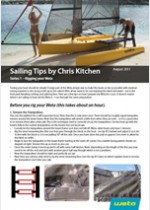
Make an award winning Raingutter Regatta Trimaran Boat Kit.
Michael Spitler
MichaelSpitler
Are you ready to put some speed into your race boat? Sick of getting beaten each season?
Here are a few speed tips to put you in front of the pack.
First, what are the three main physics considerations in Raingutter Regatta racing? Weight, Hydrodynamics, and Aerodynamics. Second, keep in mind the rules of your organization, you may be limited by how much you can modify. Third, practice blowing before race day.
- Weight: Trim excess weight off everything and be careful how much you add like decorations and paint. The plastic hull can be trimmed quite a lot, cut the nose, sand off the bottom, cut out the cabin, cutoff as much of the outriggers as possible while remaining legal. Use a very light coat of paint. The metal screws may be cutoff some if rules allow. The balsa pontoons must be shaped and sanded, just be careful not to take too much off the top because the hull will sit too low and drag in the water (thus the vertical extensions added to our boat, lessons learned). Also, consider hollowing out the pontoons but this is very tricky and any holes will need to be covered with lightweight waterproof material. The mast diameter should be sanded thin as thin as possible except for the bottom part which fastens in the hole in the hull. The mast length cannot be shortened. The sail can be trimmed (more on that in Aerodynamics section) to save weight.
- Hydrodynamics: Contrary to popular belief, the balsa pontoons should not have a V-shaped keel. Instead, they should be flat on the bottom more like a waterski, rounded up bow of course. You want the boat to rise up out of the water and skim the surface. A knife like bow with a V-shaped keel will only plow through the water slowly. The stern of each pontoon should have a slight taper. After the pontoons are initially shaped, they are temporarily screwed to the hull to check fit. Be sure they are completely straight and parallel to each other. Place the boat on a smooth flat surface like a table top and gently see if it rocks side to side or fore and aft. It should not rock, but if it does, place sandpaper on the flat surface and gently sand the bottom to make it even. Next, remove the pontoons and use super fine sandpaper (400 grit at least) to smooth all the surfaces. Before removing note their position port or starboard so they will be relocated in the same place. In order to save weight, we used a light coat of stain instead of paint and then applied clear waterproof polyurethane finish. Once dry, use a synthetic car wax for the final finish. This will repel water. Then screw the pontoons back on the hull in the same position as when removed.
- Aerodynamics: The traditional sail design is out the window. It’s bulky and not very aerodynamic, it acts more like a brake. Try rolling up the sail to make a cone or rocket nozzle shape. Not only is this aerodynamic in the front, but all the air blown into it has to come directly out the back, no air is wasted out the sides. This will conserve energy and focus the reaction force forward. Roll the plastic sail material to make a cone and using a sharp hobby knife cut small X slots opposite each other where the mast will go through and using a pen, mark the excess plastic. Unroll the sail and cut the excess plastic. Roll up again and use tape to hold edges together. Insert the mast into the hull firmly, then instal the sail onto the mast with pointy end forward, adjust the sail so it is just a little bit above the hull. Use plastic glue to fasten sail to mast. Be sure the sail is held securely to the mast or the sail may spin and cause lots of frustration on race day.
When everything is set up correctly, your boat should literally jump out of the water and shoot down the raingutter in 2 or 3 breaths maximum!
Got questions? Email me: [email protected]

Written by Michael Spitler
Aircraft Mechanic by trade; Innovator at heart.
More from Michael Spitler and MichaelSpitler

Can autonomous systems win the 2017 Team America Rocketry Challenge (TARC)?
Each year thousands of students compete for tarc. how can you win.

Japan: Explore a Neighborhood
Exploring neighborhoods in japan is one of my favorite pastimes. there are little gems around every corner..

3 ways my life improved by not watching TV.
Funny how much of our life is dominated by television., recommended from medium.

Karolina Kozmana
Common side effects of not drinking
By rejecting alcohol, you reject something very human, an extra limb that we have collectively grown to deal with reality and with each….

10 Seconds That Ended My 20 Year Marriage
It’s august in northern virginia, hot and humid. i still haven’t showered from my morning trail run. i’m wearing my stay-at-home mom….
Tech & Tools
data science and AI
Generative AI Recommended Reading
Alexandru Lazar
ILLUMINATION
Ten Habits that will get you ahead of 99% of People
Improve your life and get ahead of your peers in 10 simple steps.

Gowtham Oleti
Apps I Use And Why You Should Too.
Let’s skip past the usual suspects like youtube, whatsapp and instagram. i want to share with you some less familiar apps that have become….

Artturi Jalli
I Built an App in 6 Hours that Makes $1,500/Mo
Copy my strategy.

Iain Stanley
Digital Global Traveler
I Went Speed-Dating in Tokyo: It Explains Japan’s Sexless Population Explosion!
Exclusive conversations with a bevy of beautiful, single girls what could go wrong….
Text to speech

Tips on Sailing a Small Trimaran
Part 2 tacking, sail adjustments, wingmasts, mikelin and more.

Tacking is often a challenge with a multihull. The relative increase in windage of 2 or 3 hulls does not help, plus having at least two ‘ long & slim’ hulls in the water that both really want to go straight. But let’s discuss how we might get around this.
First, with a trimaran, it’s important to keep the boat heeled so that you have ‘only 2 hulls’ in the water. When tacking, I think there’s an argument for having the ‘windward ama down’**, as it’s then on the inside of the turn and has less distance to go. That ama will then stay down after the turn as it will now be to leeward but one needs good ‘entry speed’ as the turn is sharper. As different boat designs have different turning abilities, it’s just another thing to experiment with . (**Racing dinghies often use this technique as when the crew come over to the high side and bring the boat up vertical, they briefly create extra pressure on the sails and that accelerates them forward on the new tack).
It’s important to get head-to-wind with still some forward motion, otherwise the rudder becomes useless as you pass through the eye of the wind. This means that the initial rudder motion needs to be gentle, or otherwise, it acts too much like a brake. Once the boat starts to turn, then the tiller can be moved over more aggressively, though preferably not over 40 degrees.
The mainsheet needs to be eased out a little (say 1.5m of line) by the time you are head-to-wind – otherwise, the mainsail will be trying to stop the turn to the new tack. At this point, I’d say, ‘slacken & forget it’ until you are really on the new tack. The sail to really concentrate on is the jib. When sailing the W17 alone, I start the turn and then slacken the main before facing forward and grabbing the TWO jib-sheets, one in each hand. I hold the previously sheeted one and watch the sail until the wind starts to blow on its reverse side. Unless it’s VERY rough, I then let that sheet go completely and immediately pull in the new leeward sheet as fast as possible , to get it tightly sheeted before the wind is back in the sail. (In most light to moderate conditions, the jib does not need to be backed at all). I then check my course and pull in the mainsail & boom to accelerate the boat back up to speed.
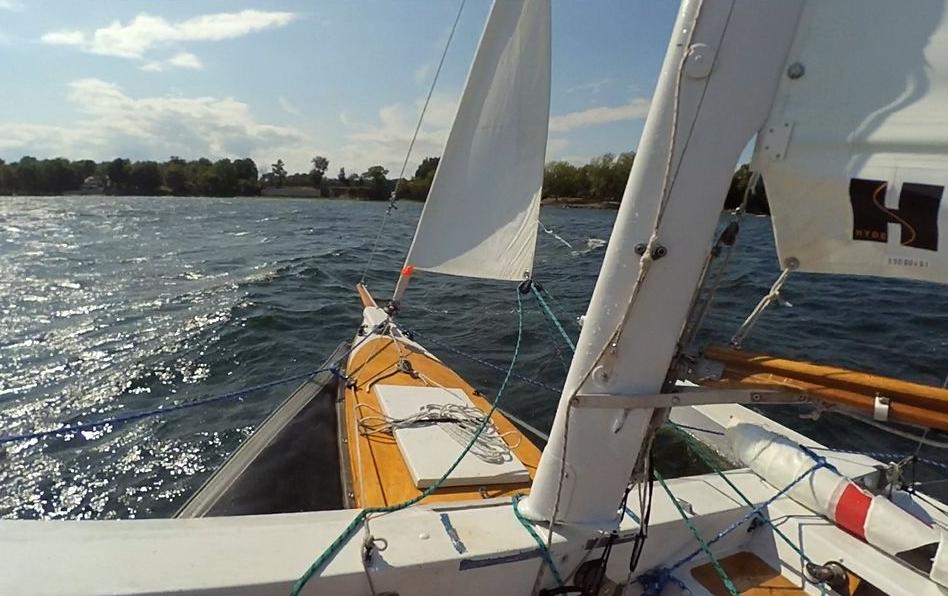
Tight mainsheet & leech
The leech area should be firm and flat for at least the most rearward 25% of the sail. I personally believe in having the leech cloth doubled in that area in order to help achieve this and also resist stretch from the high vertical loading down the rear edge of a relatively high aspect ratio sail, especially when attached to a rigid wing mast that does not bend fore & aft, even in a high wind. In such a case, it’s the square-top of the mainsail that eases off in a gust.
Mainsail foot tension

As noted in the small print under the graph, this is for a parabolic curve so we can reduce the % values by 35% (or multiply by 0.65), for a more typical aerofoil shape sail.
So if the mainsail foot is initially pulled tight, we need to ease off about 1% [0.65 x1.6%] only to give a relatively small 6% camber for high wind. But in only 5kts of wind, we will need to ease off 4.3% [0.65 x 6.6%]. This indicates that ‘cranking up’ the foot ‘super tight’ is not justified. (But in a high wind, keep a check on the actual camber in case the sail stretches, requiring tighter adjustment). So to summarize this example; to adjust a mainsail foot from one suitable for a strong 30k wind to the camber required to more efficiently match a 5kt wind, one needs to slacken the outhaul 3.3% (4.3-1) of the foot length . For a W17, this equates to 3.3% of 2400mm, or moving the clew forward 80mm .… rather more than most sailors do I suspect. It might be useful to mark these two positions on your boom, for 5 and 30kt winds (almost full stretch) .. so that you have some reference points.
This will not significantly affect the leech tension as this is more directly dictated by the vertical mainsheet tension. The photo at the end of this article, shows a W17 sail sheeted down firmly but with the foot still only lightly tensioned, so I hope this encourages you to experiment with your foot tension and not give more than you really need to maintain a foot camber that matches the wind speed in that lower area.
This easing of the foot works best with sails that are loose footed. If your sail goes into a boom groove, try pulling it out for light weather and only attach the sail at the tack and clew. ( One could argue that a loose-footed sail with a small piece of cloth going horizontally to the boom track, might be even more efficient by preventing loss of air under the sail - but that would be measured as illegal sail area for most class boats. But as smoke tests have shown that air typically flows somewhat more up the sail than down, this may not be a major issue. However, I am still interested to experiment with both a Foot End Plate (FEP) and a Peak End Plate (PEP) in the near future, and will report back on them once they are made and tested).
Bearing Off
As a tight mainsail actually resists bearing off, it’s a good idea to ease out the mainsail significantly, before, or as, you bear off. This will require slackening first the mainsheet and then the traveler, being as the traveler will probably be reluctant to slide out unless the high mainsheet tension is first relieved. One can quickly sheet down the boom again, once the traveler is out. Also, bring your weight aft a little, as it both assures the rudder stays deep and also raises the bow slightly ... both helping the downwind turn.
Wing Masts, their control and adjustment
First, let me be totally upfront with readers and admit, that although I have over 30 years experience with rotating masts, I presently have only 6 seasons of regular sailing with a true wingmast. So if someone with the experience of Randy Smyth or Chris White ever contradicts what I say here, please listen to them ;) With that ‘out of the way’, let me share what my experience has been.

Mast Section Shape
If we first look at the raw resistance of a wing mast compared to other basic shapes, we can certainly see the advantage of a wing mast as long as it's pointed into the airflow.
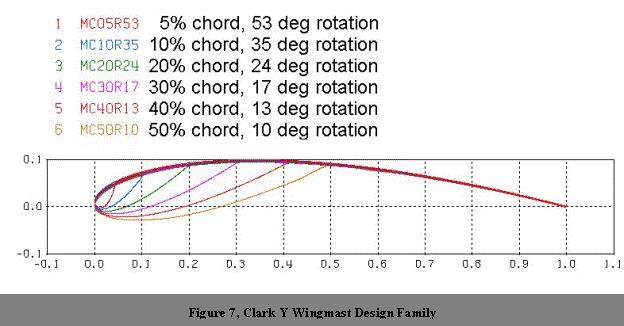
Although theoretically the front edge could be semi-elliptical, my own wingmasts have a more radiused nose, as one can argue that due to constant variations of apparent wind direction, a wider, more radiused nose will ‘overall’ be less likely to stall than a finer, more elliptical nose that’s no longer pointing directly into the on-coming air. The side wings of the mast will have a very slight curvature and lead to a track or bolt-rope tube that’s as close as ‘physically practical’ to the wing wall for the smoothest flow. For this reason, the bolt-rope tube is more efficient than a track, but it’s understood that many deep-sea cruisers feel more at ease with slides that ‘may’ allow the sail to come down faster. I say ‘may’ as some slides are even worse than a good rope-tube fit in my experience. Depends as always on the design and quality – and resulting cost. Fully battened sails with luffs over 10m are often fitted with batt-cars to get the sail down more easily.
Certainly for small tris (under 10m), I am quite at ease with a rope tube, as long as the bolt-rope itself is fairly stiff. As I also recommend and use a rotating boom, this gets rid of the projecting slides that can foul on various lines around the mast.
The last dimension of significance is the depth or ‘chord’ of the mast itself. As you will see in another article on wingmasts ( Wing Masts on Multihulls ), I do not personally recommend a chord in excess of 3 times the mast width as then the side area can become hazardous in very high winds. (But see the referenced article for ways to control this). IF it were practical to only have the mast supported at the top so that it could have full rotation to weathercock, then the 3:1 limit could be increased to even 5:1 with further potential performance gain. (Randy Smyth has been playing with this on his light, experimental boat “Scissors” but at last check, it was not certain if this can be effectively ‘scaled up’ for larger craft).
Mast Angle Adjustment
Lighter winds require a sail with greater camber, meaning that the wing-mast will need more angle with the boats centerline, with less camber and mast angle needed in stronger winds . We can also see (from the above diagram) that the chord measure of the wing-mast significantly affects the required mast angle relative to the boats centerline with small masts needing greater rotation.
So with an auto-tacking mast-tiller that’s cleated to the boom (as used on the W17), the tiller will be tightly cleated in high winds and far less so in light ones.
When sailing directly downwind, the relative mast angle can be eased off to advantage, as then the mast can act as a vertical fence to slow the loss of air off the forward edge of the sail, though this may happen seldom, as most multihulls are more efficiently sailed downwind on broad reaches, by tacking and gybing.
While a wingmast can add control to the camber of a mainsail, only jibs with some form of boom offer control of the camber for the lower part of say a blade jib of less than 100% the foretriangle. Being someone who thrives on sailing efficiency , I searched for a way to solve this. This came from an experience back in the 1980’s when I was racing sailboards. Here is the background story if you're interested.
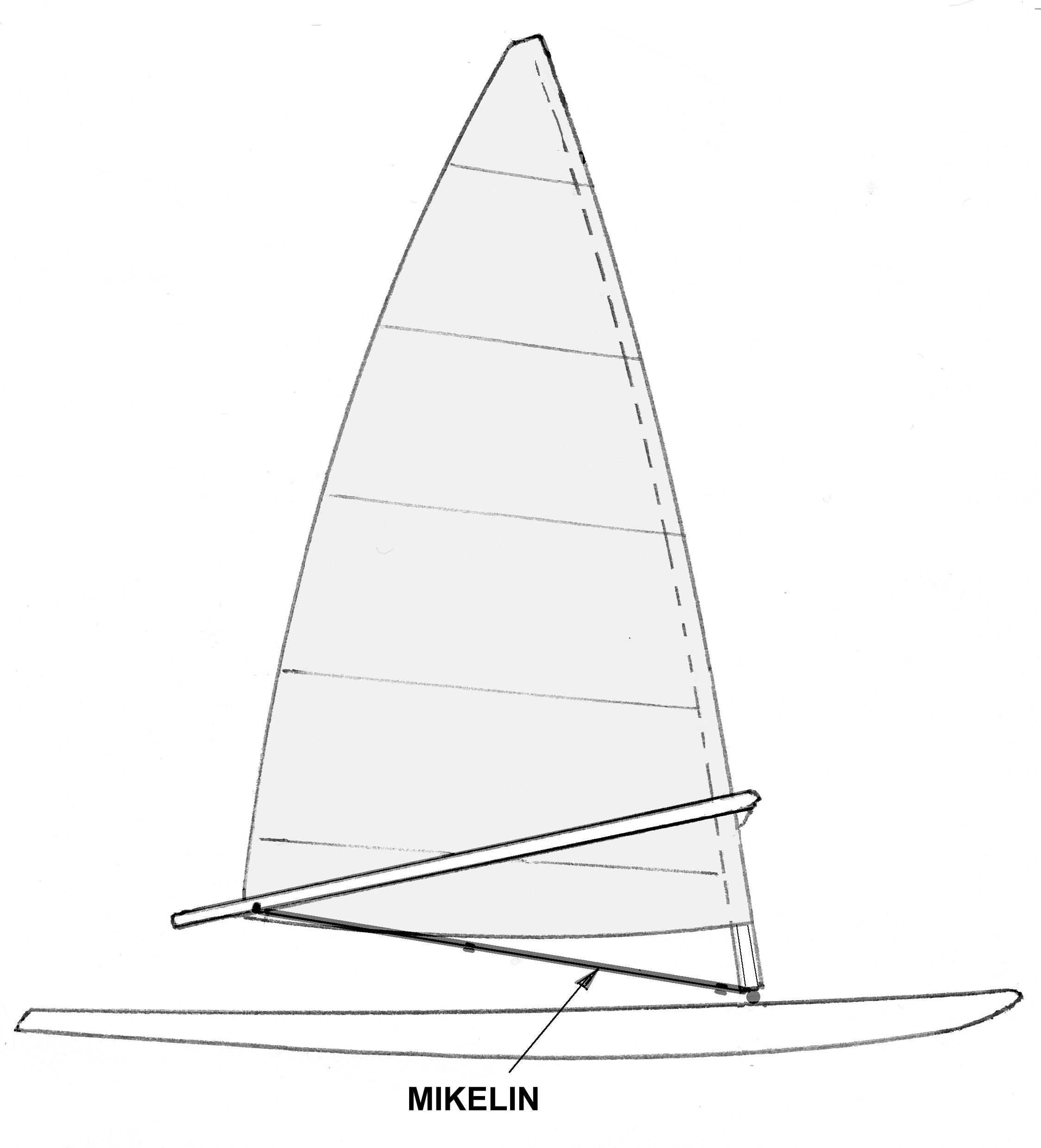
One summer soon afterwards, I entered a series of 6 sailboard races over a period of 2 days and despite the very light winds for the whole weekend, the regatta went ahead as planned. So I rigged ‘my line’ and proceeded to race. After winning the first race by a significant margin, I started to realize just how efficient my sail had now become, with this increased draft low down. But after winning the first 5 races, competitors started talking. (I knew this had little to do with any personal skill). They debated, ‘was my board faster than theirs or was it my sail?’ (They had not noticed the small line at the foot that I had cast loose to come ashore).
So for the last race, I decided to have a little fun. I had taken the series anyway so had nothing to lose. To the two sailors finishing just behind me, I said “look, one of you take my board and the other take my sail and I’ll make up a rig from whatever you don’t use”. So they were happy, and eager to beat me for at least the last race. So I cobbled together a so-so board and sail which were really not too great, but I again rigged a ‘mikes line’ to take tension off the foot of the sail. But it was same result, as I again finished ahead of both. This totally convinced me that this line was indeed a great addition for light weather. (However, on a sailboard, a tape might be better as the small rope did cut into my shin!)
Sorry for the long story, but figured you deserved to understand the history ;)
But now, on my W17, I started to notice the same issue with the lower part of the jib so I rigged a similar line from the tack to the clew of the jib in light weather and measured the result. From what I could tell using my GPS, it gave me (on average) about 0.3k to 0.4k more speed in very light airs.
Now, that may not seem like much, but it’s actually huge, representing at least a 10% increase, and even higher at very low wind speeds
So after sailing 2 miles upwind, this would place me about 1000 ft ahead of a boat without this line, whose name I had now shortened to a ‘ mikelin ’ (and most easily pronounced ‘mik-a-lin’ ).
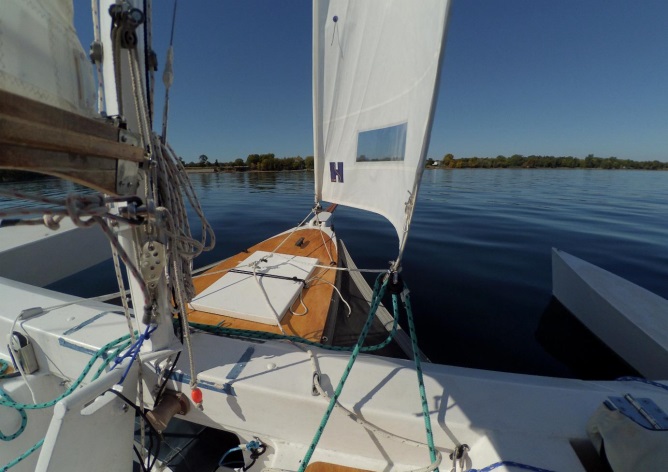
These images show two different ways to rig a mikelin to achieve the same result, and its effect on the foot camber. On the left is a loose foot-line with a central tension line to a cleat on the weather side, while on the right, is a sketch of the two options, with a direct adjustable line, between the tack thimble and the jib clew shown at the top.
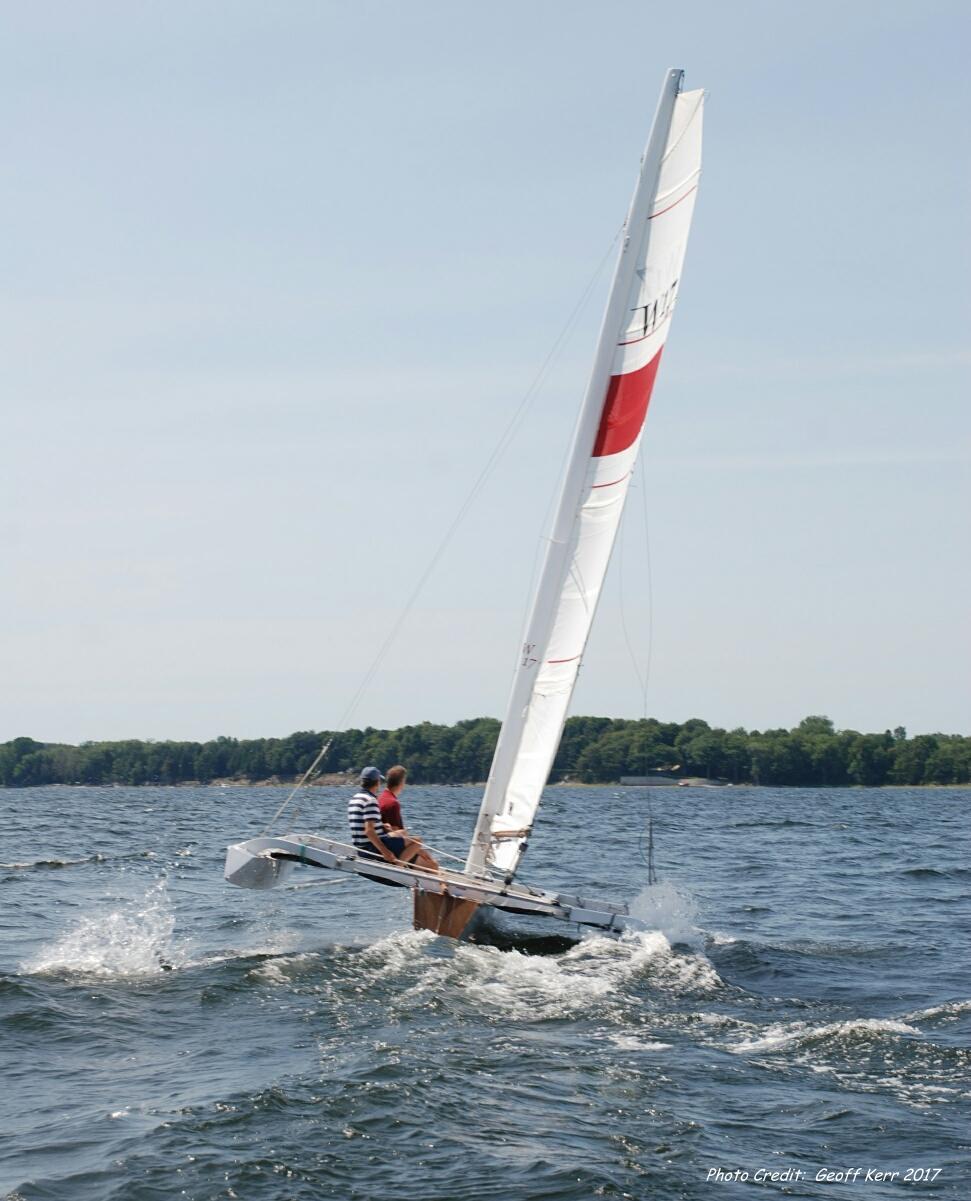
Now the jib clew can be sheeted quite firmly at the right sheeting angle and also apply vertical load down the leech to keep that as flat as needed …, yet the lower 1/3 of the sail now has the ideal camber for these very light conditions. This mikelin is useful up to about 8kts of wind but above that, there’s typically enough wind force to create the 12% camber needed. The photo above shows it working to give a far better camber to the lower part of the jib than we would normally see, and the difference in performance in low wind conditions, is quite measurable on a GPS, as noted above. Just a note though. The mikelin is less effective with a genoa as the longer foot automatically gives more camber than a shorter blade jib.
I set mine up with some loops so it can easily be tensioned and tied off, so that when the jib clew is pulled tight towards the rear, the foot has the right camber for the wind condition.
This final photo, shows how efficiently the mainsail can set behind a rigid wingmast with the right rotation. This mast was the prototype for the DIY carbon fiber wingmast design that I now have available here: CF WingMast Manual
Part 1 Adjusting & Setting Sails plus boat trim
Part 3 Discusses Tell-Tails & related efficiencies
Part 4 Discusses downwind sailing and Sailing efficiently in Waves
(Your comments, personal tips and questions are always welcome ..
"New articles, comments and references will be added periodically as new questions are answered and other info comes in relative to this subject, so you're invited to revisit and participate." —webmaster
Wētā North America
Weta trimaran weta sailboat one design high performance sailing dingy.

Wētā Class North America The Class Association of the Wētā Trimaran
Sailors across North America are excited about the Wētā Trimaran.
Whether racing or day sailing, Wētā Trimaran’s popularity continues to grow.
"CATCH A RIDE"

New Event Request
All WCNA Events
Event Reports Forum
Upcoming events.

WETAFEST 2024 Fort Walton Yacht Club Fort Walton, FL April 5-7, 2024

Hobie Fleet 51 Regatta Six Mile Cove Lake Mohave, NV April 5-7, 2024
Csc championship series henderson point kerr lake, nc april 20-21, 2024, stephen c. smith memorial regatta shell point beach crawfordville, fl april 26-28, 2024, wcna membership.
Connects you with other Weta owners throughout North America
Provides the structure for Weta Racing and Social Events
Regulates class rules and maintains one-design practices
Attracts top-notch sailors by upholding high racing standards
Supports this website and WCNA events throughout the year
Includes a Forum of racing tips, event reports, and much more

US Sailing Membership
US Sailing is the national governing body of the sport of sailing. By becoming a US Sailing member, you support the organization that supports the sport of sailing.
Learn More About
US SAILING Membership
Get a $5 discount on US Sailing Membership when you join through the MVP Program using "Weta Class North America".

WCNA organizes and promotes sailing events throughout the year
SOCIAL SAILING
Many sailors like to sail the Wētā JUST FOR FUN
The versitility of Wētā makes it perfect for individuals, couples or families
Any time a group of Wētā sailors gather, we call it a SWARM!
Many SWARMs are scheduled throughout the year
Wētā sailors are competitive.
Racing opportunities for every skill level be it beginner or seasoned competitor.
Champion sailors from many other one-design fleets have moved to the Wētā.
Local sailing clubs host seasonal series racing.
Regional championship regattas and invitational regattas are well attended.

SANCTIONED RACING EVENTS
WCNA National Championship - Held annually at rotating locations throughout the US
WetaFest (Midwinter Championship) - Held annually at Fort Walton Yacht Club, Florida
East Coast Championship - Held annually in the Mid-Atlantic area
SOCIAL MEDIA
Wētā Class North America
Keep up-to-date on the latest Wētā adventures in North America
Get Connected
Wētā Fleets are using WhatsApp to stay in touch.
Learn about last minute sailing, events, new products and much more!

WCNA Forum provides a place to share with other members of the Wētā Community
For Sale By Owner
Event reports, dealer's marketplace, technical advice, general discussions, check out the latest posts, 1315 for sale clearwater, fl, everglades challenge 2024, 2015 weta for sale oriental, nc.

Join WCNA and Add Photos

Yachting World
- Digital Edition

Round the world race: 100ft trimarans set for solo race
- Helen Fretter
- July 9, 2021
The fastest offshore racing designs ever built, the foiling 100ft Ultim trimarans, will go head-to-head in a solo round the world race in 2023

Photo: Yvan Zedda
The Ultim class has announced the first single-handed race round the world for giant multihulls , the Solo Ultim World Tour.
This will likely be the most challenging ocean sailing race ever held. The solo skippers will need to navigate a course as arduous as the Vendée Globe , but will be doing so in 100ft foiling trimarans with complex appendages capable of sailing at 45 knots , with the ever-present risk of a split-second capsize.
Six of the fastest ocean-racing designs in the world will be taking part in the new solo race round the world, with record-breaking sailors Armel Le Cléac’h , Charles Caudrelier and Thomas Coville among the solo skippers lining up.
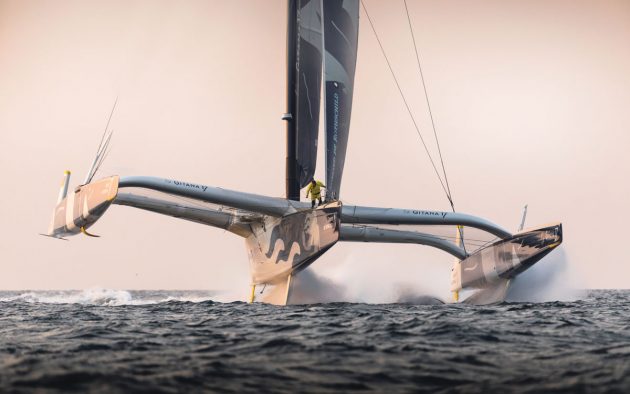
The Gitana entry Maxi Edmond de Rothschild is one of the most highly optimised big trimarans, and will be coming back into the Ultim class. Photo: Eloi Stichelbaut / PolaRYSE / Gitana
Unsurprisingly, the race has been a long-time in coming to fruition. Now called the Solo Ultim World Tour, it will be organised by the hugely experienced event company OC Sport Pen Duick, in collaboration with the Class Ultim 32/23, to start in the autumn of 2023. The concept was first mooted around 15 years ago, just as the notoriously skittish Orma trimarans were in their final days. A calendar was drawn up for the embryonic Ultime class which included solo and crewed round the world races, building up to a solo around the world race set for December 2019, then called the Brest Oceans.
Article continues below…
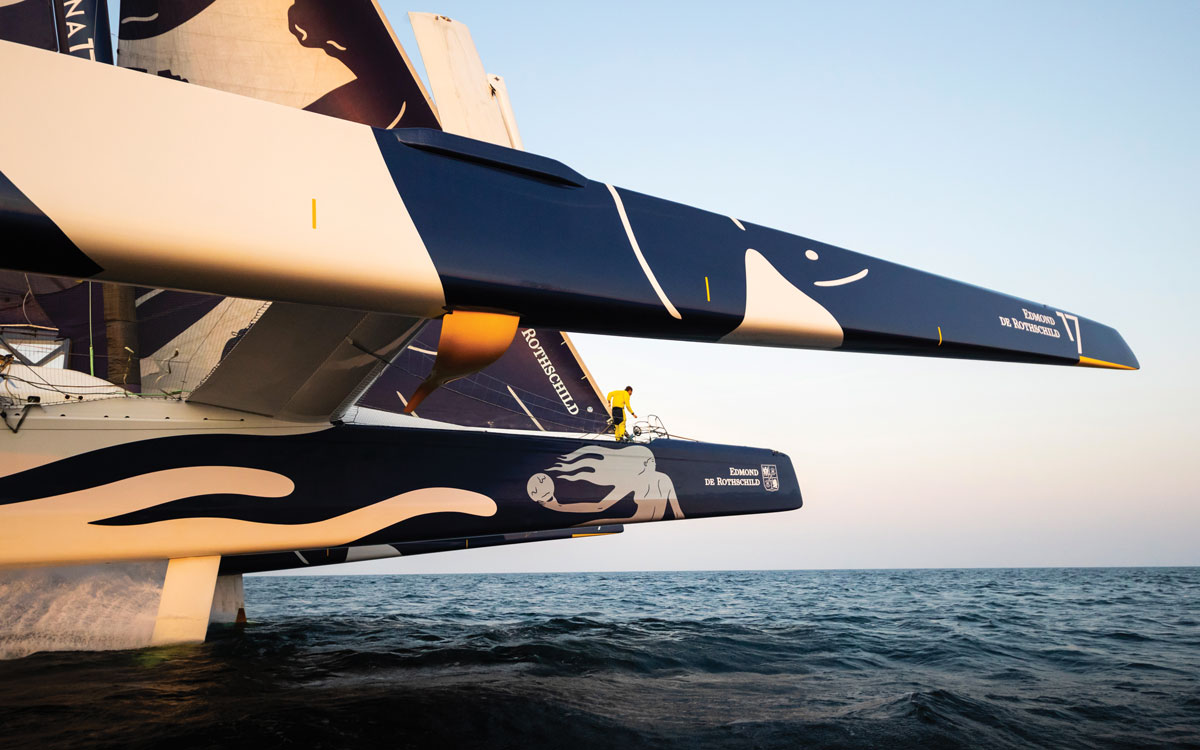
Aiming for the impossible: The inside story of the 2020 Jules Verne contenders
Forty days, 23 hours, 30 minutes and 30 seconds: that is the time that is embedded in the psyche of…

Coville sets incredible new 49-day solo round the world record – with a blistering average speed of 23 knots
Solo sailor Thomas Coville has pulverised one of the hardest records in sport: the single-handed round the world record. He…
However, in the 2018 Route du Rhum – the transatlantic race with a reputation for being something of a demolition derby – four of the big trimarans suffered severe damage. Armel le Cléac’h’s Banque Populaire IV capsized and broke up mid-Atlantic, while the Maxi Edmond de Rothschild lost 10m of one float, Sodebo also suffered structural cracking to one float and Macif lost a foil and a rudder.
History seemed to be repeating itself – in the 2002 Route du Rhum, only three of 18 multihulls had managed to complete the race, and the ensuing capsizes and dramatic rescues saw many sponsors leave the Orma fleet. It was clear that the Ultim class was nowhere near ready to race solo around the world.

Macif at the start of the 2019 Brest Atlantiques Race
However, the class changed tack. A multi-stage double-handed race looping around the Atlantic was held in 2019 instead – the Brest Atlantiques . Although several boats suffered damage – Macif swopping out a rudder in Rio, and Sodebo breaking off its starboard rudder after hitting a whale (an impact which caused so much damage that the aft section of the starboard float filled with water and later also broke away), three of the four made it around and there were no dramatic rescues.
Round the world race entries
Even more remarkably, new boats kept being launched. Banque Populaire commissioned a new Ultim for le Cléac’h, and although Francois Gabart’s previous sponsor Macif pulled out mid-build, his new Ultim – code-named M101 – was completed, and he secured new backing from French cosmetics group Kresk (now under the name SVR-Lazatigue ).
Combined with a new Sodebo for Thomas Coville in 2019, and a healthy market for second-hand giant trimarans that are ripe for optimisation, the biggest, and most audacious ocean racing fleet in the world is now attracting entry numbers to rival that of the last one-design Volvo Ocean Race (seven in the last Volvo, six currently in the Solo Ultim World Tour).
Confirmed entries for the round the world race so far are: Banque Populaire XI , skippered by Armel Le Cléac’h; Maxi Edmond de Rothschild with Charles Caudrelier (which will come back into the Ultim class after being modified out of class rules for round the world record attempts); Thomas Coville’s Sodebo; Francois Gabart on his new SVR-Lazartigue ; Actual , skippered by Yves Le Blevec, and a Brest Ultim Sailing entry, the former Actual , with the skipper still to be announced.
These sailors are the absolute elite of ocean racing. Between the five confirmed skippers alone they include two Vendée Globe winners, two around the world solo record holders, two Volvo Ocean Race wins , at least two Jules Verne around the world crewed records and multiple further attempts.
The start and finish host city has not yet been decided, although discussions are underway with the City of Brest, which has shown keen interest in hosting the event since the creation of the project and hosted the Brest Atlantiques Race in 2019.

Sodebo was one of three latest generation Ultimes racing in the 2019 Fastnet. Photo: Kurt Arrigo / Rolex
The current around the world multihull solo record stands at 42d 16h, set by Gabart on his previous Macif in 2017 . The Solo Ultim World Tour is likely to take around 40-50 days, as they will not be setting off with an optimal forecast for record-breaking.
However, the biggest question will be whether they can make it around without race-ending foil damage. After the experiences of the Brest Atlantiques Race and 2019 Route du Rhum, all the teams have been innovating with ways of both avoiding collisions, and making their trimarans more robust in the event of hitting a UFO.
The new Banque Populaire has increased structures, sacrificing ultimate light weight for strength (see more on this in the August issue of Yachting World magazine, out now). Sodebo has been experimenting with appendage fittings designed to absorb impact, and all the big tri’s are trialling collision avoidance systems such as Oscar to try and identify objects in the water.
Charles Caudrelier, the co-skipper of the Maxi Edmond de Rothschild who will be taking on the solo race, said: “This solo round-the-world race in the Ultim is a dream I didn’t even dare to hope for in my career. I have always been very drawn to the Vendée Globe, but here, at the helm of the fastest boats on the planet and in flying mode, it is quite simply the ultimate challenge.
“Leading such a boat alone on such a demanding global course is an extraordinary adventure that I am really proud to share with the Gitana Team and on the Maxi Edmond de Rothschild. I have been thinking about this world tour for two years, it is this goal that motivates me and keeps me moving forward every day.”

The newly launched Banque Populaire XI
Thomas Coville, skipper of Sodebo Ultim 3 , commented: “It is a privilege to be part of this group of sailors. With Sodebo, we have been thinking about this race since 2007 when we launched the construction of the first Sodebo Ultim trimaran.
“There were a lot of twists and turns in the creation of this race around the world. This race justifies 20 years of commitment and high-level sailing. This is the race that will consecrate the life of an athlete and a sailor.”
Armel Le Cléac’h, Banque Populaire skipper added: “Our boats are magical, and I am happy that we can share them with the public around great adventures. I can’t wait for it to start!”
If you enjoyed this….
Yachting World is the world’s leading magazine for bluewater cruisers and offshore sailors. Every month we have inspirational adventures and practical features to help you realise your sailing dreams. Build your knowledge with a subscription delivered to your door. See our latest offers and save at least 30% off the cover price.
- AROUND THE SAILING WORLD
- BOAT OF THE YEAR
- Email Newsletters
- Best Marine Electronics & Technology
- America’s Cup
- St. Petersburg
- Caribbean Championship
- Boating Safety

Headsail Trim Tips For Floating Leads
- By Madeline Baldridge
- November 14, 2023
Visible forward progress at the grand-prix level our sport is defined exclusively by speed records and foiling appendages, but meaningful innovation can also enter the scene in an unassuming manner. Small modifications aggregate over time and, when you take a step back, you realize that the system bears little resemblance to its former self. This is certainly the case with modern-day headsail trimming systems. What was once a metal track running along the sheerline for sheeting low-aspect, stretch-prone headsails is now typically a floating low-friction ring with three-dimensional controls for trimming high-aspect, high-modulus headsails.
Walk the docks of an ORC regatta, a one-design championship, or even a beer-can race and you will notice how many boats are now equipped with some version of a floating headsail lead. With the broadened range of lead positioning available and the ability to make fine adjustments, knowledgeable trimmers can contribute substantial performance gains to any boat they step onto. Understanding the proper balance of foot depth and leech twist to achieve target performance numbers is, of course, the first step toward accessing these new gears. But knowing when to stray from the perfect setup in order to power through asymmetric chop, hold a tight lane off the start line, split low and fast out of a crowded leeward mark, or extend from a closely trailing boat on the offset leg will set you apart from the crowd of average trimmers. Let’s take a look at each axis of lead positioning and its effect on the sail.
Fore and aft: Optimizing the longitudinal jib-lead position
Fore and aft movement of the lead position primarily controls foot depth. Moving the lead forward will increase depth in the lower part of the sail, while moving it aft will flatten it. The side effect of this movement is leech twist control. As the foot gets fuller, the leech becomes straighter and more closed at the top of the sail. As the foot gets flatter, the leech becomes more twisted. This has historically been the most common axis for adjustment because, in a basic sense, both flattening the foot and twisting the leech are methods of depowering the sail. When we factor in the nuances of sea state, vertical wind shear, tolerances of groove width, and efficient mode shifting, longitudinal control alone limits the versatility of our headsail.
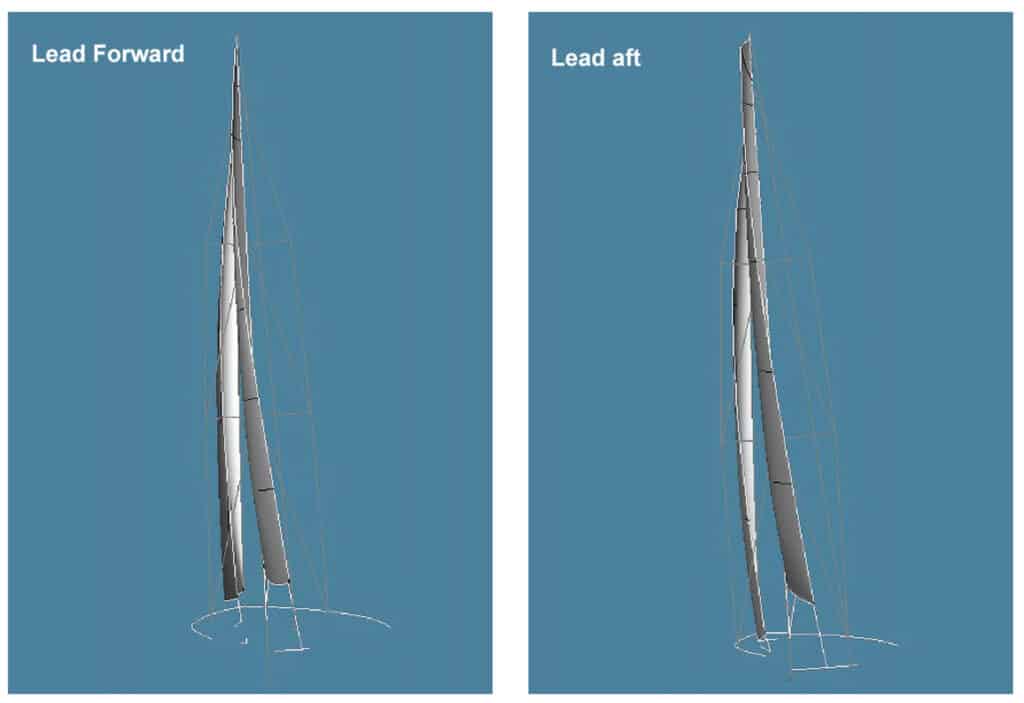
Inboard and outboard: Optimizing the athwartships jib-lead position
Controlling the athwartships position of the lead is typically referred to as inhauling. Moving the lead inboard narrows the angle of attack. All else equal, this means the boat must point higher in order for the wind to view the headsail the same way as it was before being inhauled. The major limitation here is when the slot between the headsail and mainsail becomes too narrow and the flow coming off the jib inverts the front of the mainsail.
The goal of setting the athwartships lead position is to set the jib leech close enough to the main that it compresses and accelerates the wind between the two sails and forces the flow over the back of the main to remain attached farther aft than it would otherwise, but not so narrow that it bubbles the front of the main and creates an unreasonably thin groove for the driver. When I decide where to set the inhauler, I typically check for just a touch of visual feedback (light fluttering) in the main luff and communicate with the driver about how easy it is to keep the boat tracking well. In a lumpy sea state, for example, the driver will need a wider angle of attack in order to have adequate freedom to maneuver through the waves.
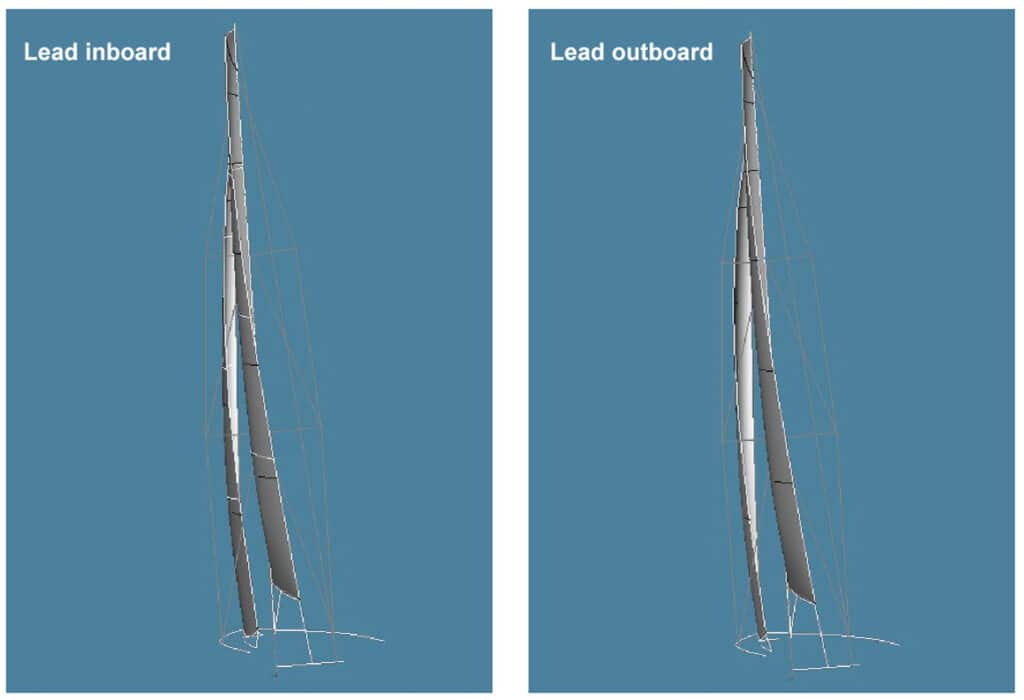
Up and down: Optimizing the vertical jib-lead position
The up and down control of your lead position can be seen as having a similar effect as the fore and aft control does. However, changing the up and down position has a more direct effect on the leech twist and a more indirect effect on foot depth. As headsails have become higher-aspect, having more precise control of the leech twist has become increasingly important. This is likely why vertical lead adjustment has been added to many boats or replaced the longitudinal adjustment altogether.
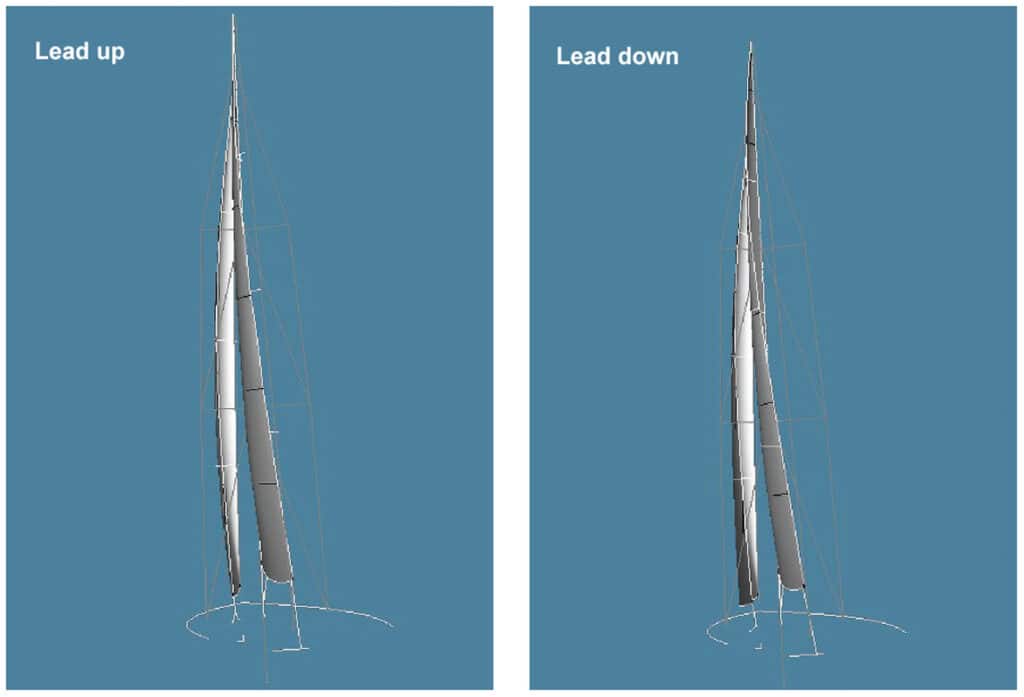
Now that we understand the impact of each control axis, how do we find the sweet spot for our floating jib lead at any given moment? A good starting point is to follow the classic guidance of achieving an evenly breaking luff. The jib clew should be low enough that the luff telltales at the head aren’t breaking drastically earlier than the ones closer to the foot are, but not so low that the upper leech telltales are stalling from too little twist.
The clew should be far enough forward that there is enough power in the foot to achieve target speeds at upwind polar angles, but not so far forward that the depth induces too much drag and the upper leech is, once again, stalling. The clew should be inboard enough to maximize upwind pointing ability, but not so far inboard that it overly compresses flow through the slot, disturbing the luff of the main.
Of course, we don’t have the luxury of each adjustment functioning in isolation. We must also understand how each control impacts the complete setup and how to correct unwanted impacts. Inhauling the jib can also increase the foot depth, so to achieve a narrower angle of attack without creating unwanted drag, we must move the lead up, shift the lead back, or pull the sheet on harder. Easing the lead up can allow the clew to fall to leeward, so we can inhaul more to bring the angle of attack back to where it was. Because of this interconnected relationship between the floating lead control lines, it can be difficult to make reliable marks and repeat settings precisely. This means trimmers need to be overly discerning when it comes to the proper look of the jib. We need to check in regularly on the luff telltales, leech telltales, and feedback in the main to visualize the flow over our sail.
Adding one more layer to the puzzle of determining jib-lead setup is input from the tactician. Aside from the methods outlined above for achieving efficient upwind trim, floating jib leads are also beneficial to short-term mode shifts. For example, if there is a tactical call for a high mode off the start line to clear or protect a good lane, the headsail trimmer should inhaul the jib as the main trimmer moves the traveler up. The groove will be narrow and speed will suffer slightly, but when done efficiently, the task can be completed quickly before transitioning right back to the best VMG mode. When sailing off the wind, the floating lead allows for much greater ability to keep the sail trimmed properly without requiring flattening sheets or outboard leads.
A good trimmer knows how to make their jib look nice and perform well. A great trimmer will cross-reference their settings with the main trim, helm balance and tactical mode to increase the performance of the entire system.
- More: how to , Print Fall 2023 , sail trim
- More How To

The Wisdom of Augie Diaz

Why S-Turns, Roll Jibes and Roll Tacks Are Fast

The Path to Consistent Boatspeed
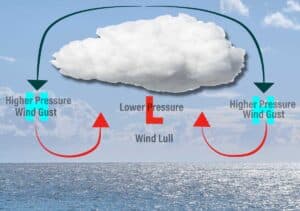
How Clouds Impact Your Race Strategy

Brauer Sails into Hearts, Minds and History

Anticipation and Temptation

America’s Offshore Couple

Jobson All-Star Juniors 2024: The Fast Generation

- Digital Edition
- Customer Service
- Privacy Policy
- Cruising World
- Sailing World
- Salt Water Sportsman
- Sport Fishing
- Wakeboarding

Trimaran Buying Tips: Choosing a trimaran that fits your needs
New buyers guide for trimarans.
What is the best trimaran? It is a tough decision to make. Trimarans deliver on a number of “product characteristics” that any marketing team can hang their hat on: speed, stability, versatility, unique trailerability in this case, and perhaps most of all safety . But that doesn’t necessarily tell you which is the best for you and your sailing plans. The truth is that many of our trimarans are multi-purpose vehicles, and so it’s hard to sort out which is a “better cruiser” or which is a “better racer” and so on – because many of them have the same terminology on our website , and fans of particular models on social media tend to use that weapon of choice for everything! Here’s some insight into how we see our own Corsair trimaran models .
Best for young families
The C o rsair Pulse 600 is fast, fun, and sporty-looking. That gives it great appeal with the kids. But it’s also the most easily trailerable – boasting trailer-to-water time of 20 minutes with a little practice. But here’s the thing: in the year’s since launching the Pulse 600 none that we know of have capsized in a normal sailing incident. Sure, someone might have dropped one off a dock – but these boats are stable. And with the greatest buoyancy to weight ratio of any of our tris, it’s virtually unsinkable. So even in the worst case scenario of being hit by another larger vessel, this is the boat to be in. It’s low to the water so men (or anyone) overboard can be retrieved most easily from this model. And it’s low-cost when it comes to ongoing expenses. The sporty looks might get you thinking this is our race boat, and it can be, but not like what’s next…
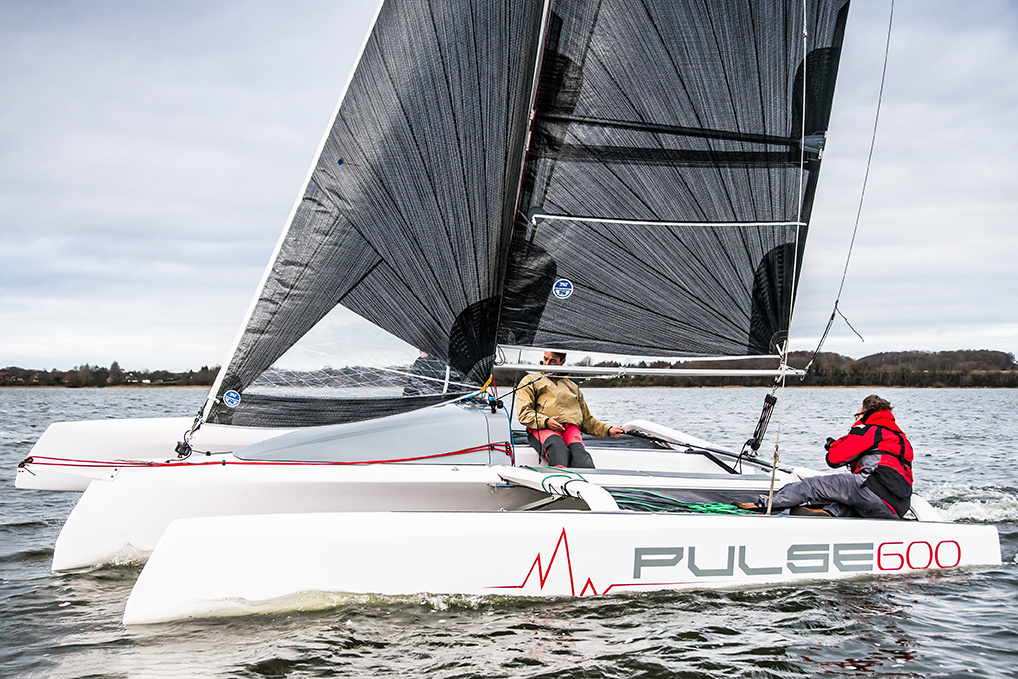
Read more: Sailing the Pulse 600 was just wicked fun!
Best for Fleet Racing
Corsair 760r.
This is the trimaran sailboat to choose when you have a family, or a crew you love to sail with, and racing is the priority. This trimaran IS more tender than a Pulse 600 – let nobody tell you otherwise. But the speeds are legendary and the excitement unmatchable. It’s still virtually unsinkable and is indeed a safe boat all-round. But when choosing a purely family daysailer it’s the Pulse 600 you want. For fleet racing, take the 760R .
View more: Corsair 760R Specifications
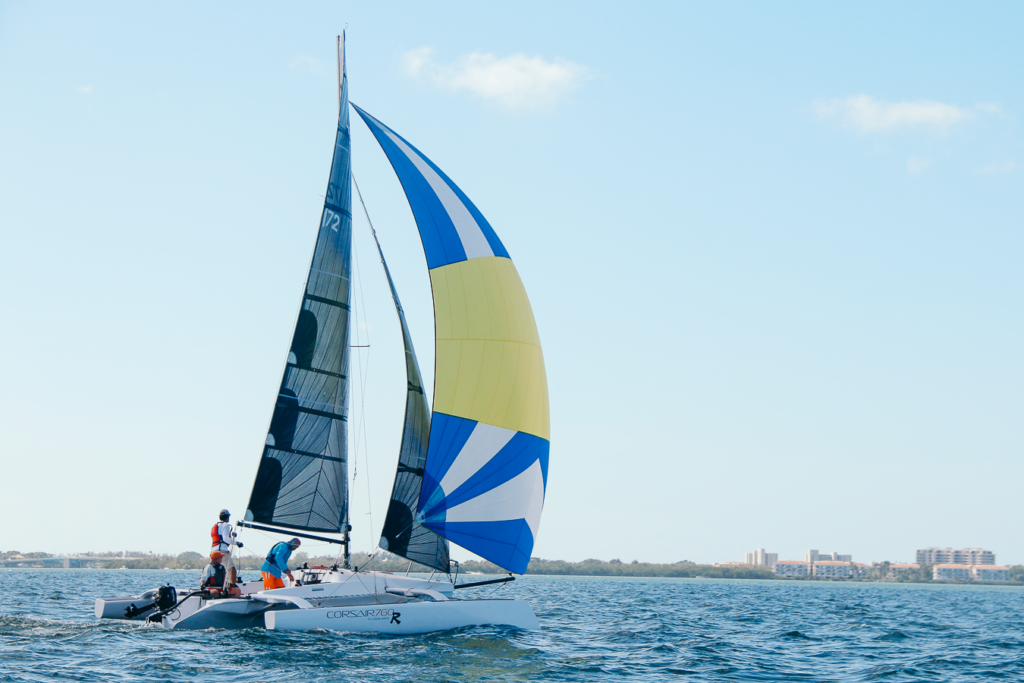
Best Inshore
Corsair 760 (standard).
The Corsair 760 standard version has a cabin, a place for a porta-potty, a small galley, and plenty of shelter when the sun or rain gets too much. This is the perfect island hopper – because it still has the remarkable speeds found on all 24ft variants of Corsair trimarans. But it truly is comfortable when you need a rest. She is also of ideal size for compact to trailer, tough, and astoundingly stable and versatile. These features have earned her the title Multihull of the Year 2018 . Read more .
Sailing the Corsair 760 – fast, fun, and easy!
Watch more: 4 Reasons our family LOVE Trimarans
Best Weekender
Corsair 880.
The first “big Corsair trimaran” – and so for short stays it’s the Corsair 880 you want. Designed for up to a week aboard, this sailing trimaran has separate cabins, a private heads, and a proper saloon and galley. Headroom is stunning for a 28 (or 29) footer and you get a helming experience much more apt for longer durations than what’s found on the Corsair 760 . This feels like a big sailboat and is. With a bit of practice you might launch this in 35-40 minutes. So there is more involved in getting from trailer to water than the trimarans listed above. But the rewards once you’re in the water are night-and day. This is a big step up from the 24ft range.
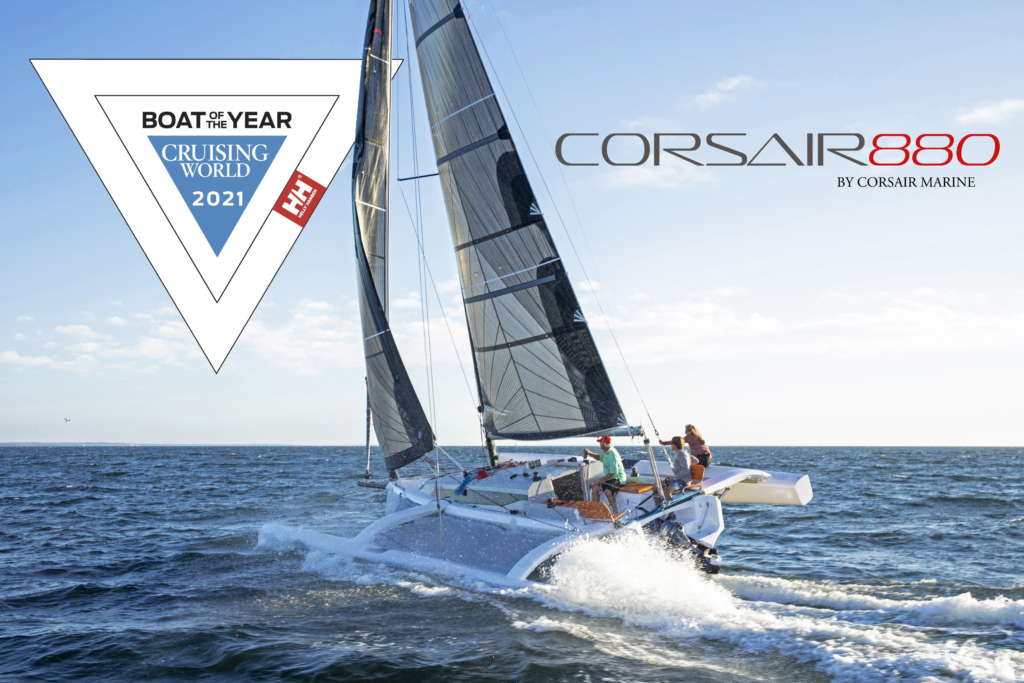
Read more: Corsair 880 To Be 2021 Best Sport Boat Of The Year By Cruising World
Best Racer/Cruiser racer
Corsair 970.
If the Corsair 880 is a Cruiser/Racer, then this is a Racer/Cruiser. The Corsair 970 trimaran is probably on level-pegging with the Corsair 880 on interior comfort. What separates the 970 trimaran is the raised helm options (great visibility and comfort for long periods on the helm) and racing practicality. The interior on this trimaran is more durable and appropriate for racers dragging sails in and out and putting in hard miles on a sailboat. So it does what the 880 trimaran does, but gives the racers more of what they’re looking for. That said, it’s still just 31 feet. So it’s a Category B or C racer/cruiser and qualifies for some offshore races in-between. How about offshore racing? – look to the Corsair 37 . But the 970 is one heck of a kick – this sailing trimaran is available in Sport, and Full Carbon construction. So that tells you something about how these boats are used and their capabilities.
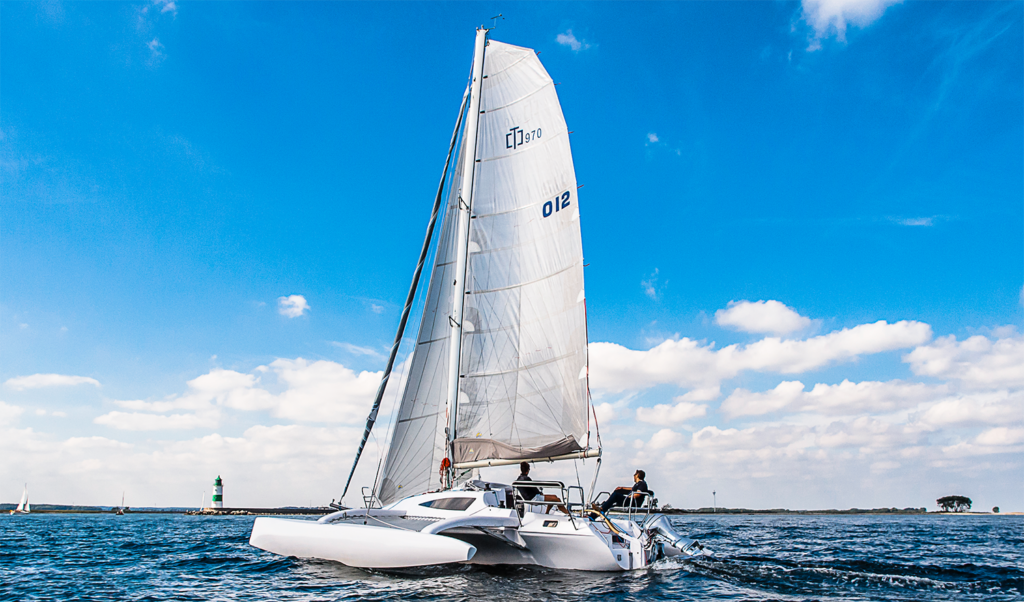
Read more: Why The Corsair 970 Is The Perfect Trimaran For You?
Best Offshore Racer
We see this as the ultimate weapon. Famed for racing and cruising in northern climes, in the tropics and anywhere in between, the Corair 37 trimaran when in the right hands is unbeatable . Is this trimaran designed to fit for families? Probably not. Handling a Corsair 37 is for the experienced , and small children are probably not the kind of distraction you need entering and leaving port in a Corsair 37 – or in changeable weather. With smaller ones, you’d probably take a harder look at the Corsair 880 and 970 first. But if you’re not caught up in the hubbub of childcare this could be the outlet you need!
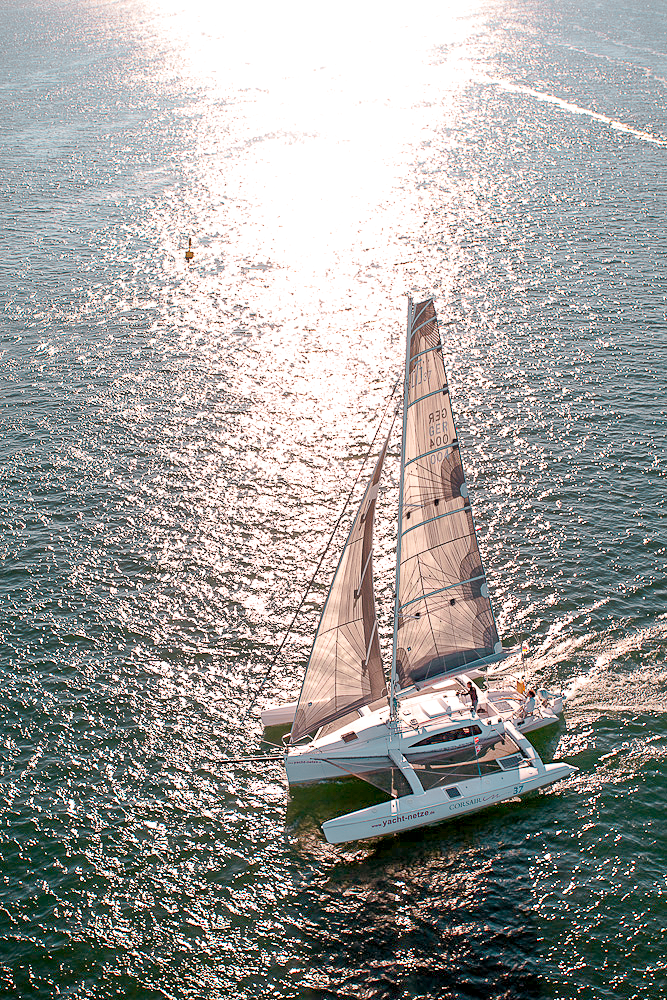
So I have made my choice of the most suitable trimaran for my sailing needs. Now what?
Trust us, we have received countless queries regardings the lead times for trimarans . Normally the standard lead time for trimaran is 5-6 months. Ohh why is it so long you may ask. It’s because as impressive as they look, the process of building a trimaran often requires extensive and detailed development and designs, as well as high quality tooling and extensive filling, fairing, and checking. Taking the trimaran design for example, we elected for CNC cut beam landings and strut mounts to ensure a sufficient accuracy of those hard-to-shape areas. These components have then been grafted into the traditionally framed plugs with careful precision and measurement. Then 3D scanners are set up to digitize all components and issue an accurate digital file, which we will then use to overlay with the original design. Deviations between them are detected using specialized quality assurance software. With everything in place, we will then finely tune the parts before a final scan to confirms inaccuracies were within tolerance.
How do we ensure quality in our final design?
How we are using technology to our advantage
So it’s not a flick of your fingers and it is ready on the market tomorrow, or next month. It’s not the case of how we build our Corsair range. Extensive lead times only prove that our trimarans are built to the best quality. However, most of the time it is 5-6 months, but some times there are already plenty of tris sitting on the water ready to go tomorrow. Talk to us early to see what the current situation is on our backlog.
How To Set Up A Cosair Trimaran
Folding Corsair trimarans: Legendary ability, unbeatable reliability
5 reasons why the Corsair 760 trimaran is your Multihull of the Year 2018
Share This Story, Choose Your Platform!
Related posts.
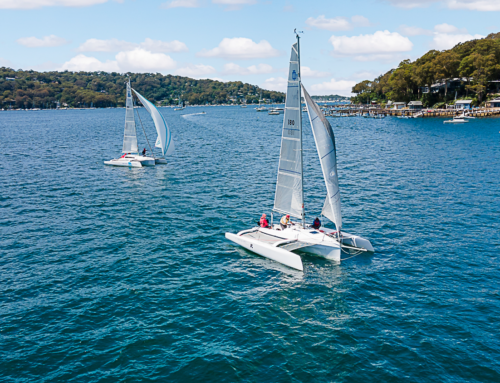
Corsair & Seawind Pittwater Regatta 2022

Corsair 880 Trimaran 2021 Review by SAIL Magazine
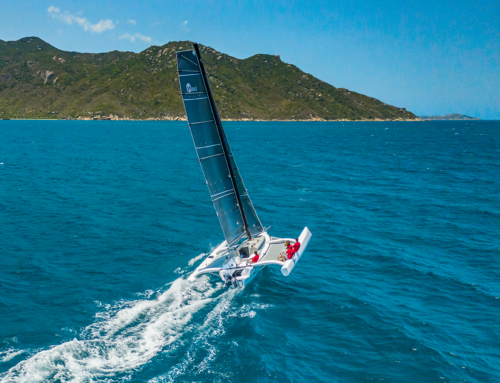
Seeing Triple – Multihull Trimarans Redefine Sailing With Speed & Agility

The current situation at Corsair Marine
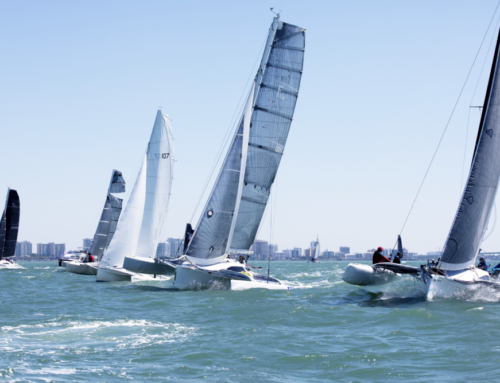
The Corsair Nationals 2021 – Once again a huge success to the trimarans community!
Free Shipping in the US on Orders $75+
- 1-888-609-2827

Item added to your cart
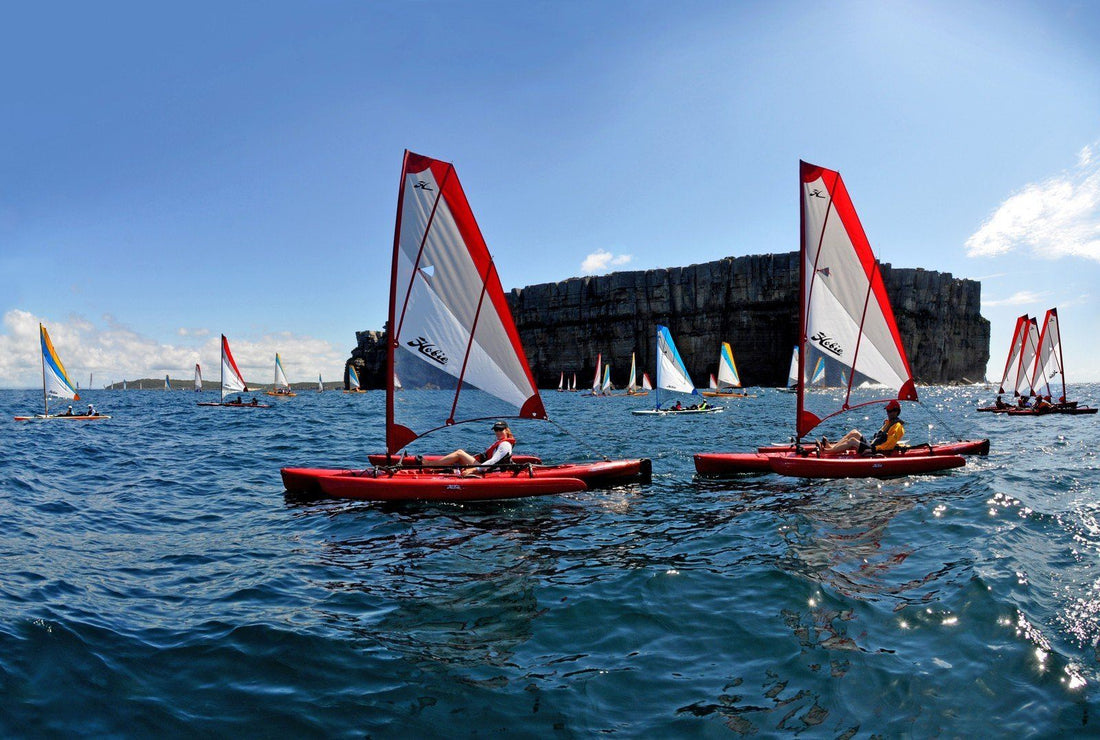

The Complete List of Trimarans
There is no single trimaran that is best for everyone. Where some prefer luxury cruisers for long trips with family and friends, others might opt for a high performance racing tri for thrilling rides at breakneck speeds. With the recent spike in trimaran popularity, these days there is a perfect tri for every sailor. So to help prospective trimaran owners decide which boat is just right for them, we here at WindRider have put together a comprehensive list of the best trimarans on the market today! Read through for simple at-a-glance trimaran comparisons of boats both big and small, exhilarating and relaxing, and for all price points.
Jump to a specific sailing trimaran: Neel Weta Corsair WindRider Dragonfly Catri Astus Hobie Sea Pearl Farrier Sea Cart Multi 23 Triak SeaRail Warren Lightcraft Diam Radikal Challenger

Known for their award-winning luxury trimarans, NEEL is based in La Rochelle, the capital city of sailing in France. NEEL trimarans are built for fast cruising with an average cruising speed of about 10 knots, and are even configured to facilitate that sustained speed under motor propulsion. The NEEL 45 was notably named Cruising World’s Most Innovative Vessel in 2013, and by all accounts is an easy-to-sail, high performance boat that is just plain fun.
At a glance:
Models: NEEL 45, 65
Length: 45’ – 65’
Cost: $$$$$
Use: Luxury cruiser

A fan favorite, Weta trimarans are fast, stable, and remarkably easy to rig. This single-sailor tri has a capacity of up to three, and the ease with which it can be transported and stored makes this a great, versatile boat for beginners. The Weta was named Sailing World’s 2010 Boat of the Year, and one ride is enough to know why: simply put, the Weta is an absolute ton of fun to sail regardless of skill level.
Models: Weta
Length: 14’5”
Cost: $$ $$$

The high-end Corsair trimaran definitely holds its own in the categories of versatility, performance, and convenience. Boasting a rigging time of 30 minutes from trailer to sailor , the Corsair 42 – whose convenient folding amas makes trailering possible – is a simple option even for single sailors, though cabin space is suitable for two adults. These boats are wicked fast, capable of reaching speeds of 20+ knots, and were made for skilled sailors seeking solid construction and high performance vessels, not for beginners.
Models: Pulse 600, Sprint 750 MKII, Dash 750 MKII, Corsair 28, Cruze 970, Corsair 37, Corsair 42
Length: 19’8” – 37’
Cost: $$$$ $
Use: Sports cruisers

Built for the sailor who wants to maximize the joys of sailing while minimizing any hassle, WindRider trimarans are notoriously fast, very safe, and a blast to sail from start to finish. With several models that can hold between 1 and 6 riders, including adaptive designs to allow participation from sailors of all levels of mobility, there’s something to suit every sailor’s needs. The WindRider 17, an exhilarating ride perfect for families or camper sailors, has been known to reach speeds of up to 20mph. This easy day sailor goes from trailer to sailing in under 30 minutes and is sure to fit in perfectly with whatever adventures you have planned.
Models: WR 16, 17, Tango, Rave V
Length: 10’11” – 18’3”
Cost: $ $$$$
Use: Day sailor

The Danish-built Dragonfly trimarans come in a variety of models ranging from 25’ – 35’, all known for their spry performance, comfortable ride, and ease of use. Every model comes equipped with the unique “SwingWing” feature, a motorized system that can unfold the amas even while the boat is already underway – making it accessible to marinas and slips, and even makes trailering possible. Perfect for those who don’t want to sacrifice their comfort for high performance, the Dragonfly can breeze along at 13 knots while remaining one of the quietest compact cruisers out there.
Models: Dragonfly 25, 28, 32, 35, 1200
Length: 25’ – 39’

Designed for both safe cruising as well as for high speed racing, Catri trimarans will make your day. Especially noteworthy is the Catri 25, a stable yet wildly fast foiling trimaran with accommodations for up to 6 people. With profiles optimized for speeds of 25+ knots when foiling, this is no beginner’s sailboat. The special attention paid to stability in the foil design allows the Catri to be a single sailor vessel, even at foiling speed, with no special physical abilities. Whether you’re taking a small crew for longer rides at shuddering speeds or bringing the whole family along for a shorter, but still thrilling sail, the Catri is truly one of a kind.
Models: Catri 25
Length: 25’
Use: Cruiser/racer

A popular brand of trimaran in Europe, Astus has recently made its way to the US market to the delight of sailors on this side of the pond. Designed to offer maximum pleasure with minimum hassle, all models of Astus trimarans are fast to set up, quick on the water, inherently stable, and always a joy to sail. Their outriggers are mounted on telescopic tubes for easy stowage and towing, and can even be extended and retracted on the water for access to narrow passageways and monohull slips in marinas. With models in all sizes and price points, Astus trimarans are a great option for any sailor.
Models: Astus 16.5, 18.2, 20.2, 22, 24
Cabin: Some models
Length: 16’ – 24’
Use: Sport cruisers
HOBIE ADVENTURE ISLAND

Great for beginners and adventurers alike, the Hobie Mirage Adventure Island series is nothing if not just plain fun. With the option to use as a kayak or as a very basic trimaran, the Hobie is transportable, versatile, unintimidating, lightweight, and wonderfully affordable. The pedal system known as “Mirage Drive” allows a person to pedal the kayak using their legs for an extra kick of movement in slow winds. Amas tuck close to the main hull for docking or car-topping, adding serious ease and convenience to the exhilarating experience of the Hobie.
Models: Hobie Mirage Adventure Island, Mirage Tandem Island
Length: 16’7” – 18’6”
Use: Convertible kayak/trimarans

Best known for its use in camp cruising excursions, the Sea Pearl offers a roomy main hull and particular ability to sail in very shallow waters, making beaching and launching a breeze. The lightweight Sea Pearl trimaran is easy to tow, and the larger-than-expected cabin opens this vessel up for overnight adventures with plenty of storage space. The simple design makes the Sea Pearl notoriously low maintenance, and the ease it takes to rig and sail it add to the overall delight of owning this boat.
Models: Sea Pearl
Length: 21’
Use: Camper cruiser

Quick, lightweight, roomy, and trailerable, Farrier trimarans are made for versatility to fit every sailor’s needs. Different Farrier models are available in plan or kit boat form for those who appreciate building their boat themselves, but of course, also as the full production sail-away boat for the rest of us. Single-handed rigging and launching takes under 10 minutes from start to finish, minimizing hassle and getting you on the water fast. All non-racing Farrier designs use a minimum wind capsize speed of 30 knots or more to ensure safety for all those aboard. Add the roomy cabin and high speed capabilities to the equation and you’ve got a boat that is great fun for everyone.
Models: F-22, 24, 25, 82, 27, 28, 31, 9A, 9AX, 9R, 32, 33, 33R, 33ST, 36, 39, 41, 44R
Length: 23’ – 39’4”
Cost: $$$ $$
Use: Sport cruisers/racers

One of the biggest names in the game, SeaCart is internationally noted for its high performance trimarans that far exceed expectations for a production boat of its size. The SeaCart trimaran performs as brilliantly off the water as it does on with its super-light and efficient harbor folding system, making light work of trailering. Notoriously easy to manage and maintain, the SeaCart 26 One Design is the ultimate day racing trimaran, designed for both course and inshore/coastal distance racing. Absolutely worth the international buzz it has garnered, the SeaCart is a thrill from beginning to end.
Models: SeaCart 26
Length: 26’

A high performance racer class, the Multi 23 is a lightweight, powerful trimaran known for its wicked speed of up to 25 knots. Multi trimarans of both available configurations were designed to give beach cat thrills and speed without any of the stability or seaworthy concerns. Open ocean sailing is no issue for the Multi’s big bows, which do their job to keep her stable. Built for sailors with a need for speed, the Multi makes a perfect weekend boat for racers, especially those with a taste for boat camping.
Models: Multi 23
Length: 23’

Another dual outrigger sailing kayak/canoe design, the Triak trimaran was designed to be effortless and fun, especially for beginners. Paddle the kayak with sails furled, use the foot pedals for an extra kick of momentum, or sail with just the mainsail – the only boat in its class to feature an asymmetrical spinnaker – for exhilarating speeds and a blast on the water. Car-top the Triak anywhere for a quick sail or plan for a week long expedition, but always count on having a great time on this easy little boat.
Models: Triak
Length: 18’
Use: Convertible kayak/trimaran

SeaRail trimarans are known for being affordable, light weight, trailerable trimarans that offer the perfect combination of exciting and relaxing experiences to a wide range of sailors. Whether it’s day sailing with your family, resort or camper sailing, SeaRail trimarans are ideal leisure vessels. Leave the hassle to the other boats – the SeaRail takes you from trailer to sailor in 15 minutes. But don’t let its reputation as a leisure tri fool you: if speed is what you want, rest assured that the SeaRail can deliver that as well.
Models: SeaRail 19
WARREN LIGHTCRAFT

Warren Lightcraft trimarans , another example of a convertible kayak-to-sailboat option, are known for their aesthetically pleasing designs that are also, as the name implies, very light for simple transportation and ease of use. Convert the kayak into a fast, high performance sailboat in just minutes, fly around on the waves all day long, then simply car-top the 68lb Warren for a maximum enjoyment, low-hassle day on the water. Perfect for sailors and paddlers of all skill levels, the Warren Lightcraft is the best of both worlds and an absolute joy to sail.
Models: Warren Lightcraft
Length: 15’6”

Built strictly with racing in mind, the Diam 24 is a light, powerful one-design class trimaran and a notoriously exceptional performer. Boasting blistering speeds of up to 30 knots, Diam trimarans are not intended for beginners. For racers who crave the very best in terms of intense speeds, smooth handling and impeccable performance, the Diam is the red-hot one-design racing tri for you.
Models: Diam 24
Length: 24’

For the sailor who prefers the finer things in life, the Radikal 26 delivers. Perfect for bringing the whole family out for a day on the water, this high performance, trailerable sailing trimaran strikes the most luxurious balance between quicksilver speeds and a smooth, comfortable ride. The Radikal 26 trimaran is as convenient to transport and set up as it is pleasant to sail, with a folding system that minimizes rigging hassle and also makes this a trailerable tri. Built for a fast and comfortable sail rather than a hold-onto-your-seats thrill, one-the-water safety and overall pleasure makes the Radikal 26 what it is.
Models: Radikal 26
Use: Sport cruiser

A solidly-built, single-handed trimaran, the Challenger also doubles as an adaptive design – meaning it is made to accommodate sailors of all levels of physical mobility. Best suited to lakes, the Challenger is a very safe, seaworthy boat for sailors of all ages and experience levels. Add to this the ease of owning, transporting and maintaining the Challenger trimaran and what you get is a simple, fun sailboat perfect both for beginners and those seeking a cheap thrill alike.
Models: Challenger
At a glance comparison:
Did we miss one? Let us know. Tell us what you sail and what you like about each boat in the comments below.
Suggested Products
Related articles, astus 20.2 in the mug race.
Here is a submission by one of our Astus 20.2 owners.
The Mug race is a very popular sailboat race in North East Florida. It has been organized for well over a half decade by the Rudder Club. It is...
WindRider Supports Adaptive Sailing in Sandusky Ohio

WindRider is proud to support the ongoing efforts of Adaptive Adventures , who in conjunction with the Sandusky Sailing Club in Sandusky, Ohio, will be bringing a new Adaptive Sailing program to Sandusky Bay and the local region. The...
WR17 Sailing Adventure in Saskatchewan Canada
ELBOW RUN 2015 - The Lake Diefenbaker Experience
We extend an invitation to all WindRider enthusiasts to join us for our third Lake Diefenbaker WindRider Experience. This is a 5 day sailing/camping trip, offering excellent day time sailing along with communal...
- Choosing a selection results in a full page refresh.
- Opens in a new window.
JavaScript seems to be disabled in your browser. For the best experience on our site, be sure to turn on Javascript in your browser.
Limited Edition 2024 Solar Eclipse Gear »
Pinewood Derby - ENTER TO WIN!

Eagle Scouts
Family Camping
Scout Chef Kitchen
Outdoor Fun
Conservation
- Shop All Cub Scouts
- Hats & Caps
- Slides & Neckerchiefs
- Shop All Scouts BSA
- Badges & Patches
- Shop All Venturing
- Shop All Leader

- Shop All Youth
- Hats & Caps
- Accessories
- Shop All Adults

- Shop All Patches & Badges
- Council Shoulder Patch
- Merit Badges
- Patrol Emblem
- Interpreter Strips
- Generic Emblems
- Badge Magic
- World Crest and Rings
- Custom Numerals
- Shop All Pins
- Recognition & Service
- Webelos Activity Pins

- Shop All Awards
- Shop All Accessories
- Bags & Totes
- Class Rings
- Shop All Flags
- Custom Flags

- Shop All Pinewood Derby
- Official Car Kit
- Shop All Merit Badge Kits
- Woodworking
- Leatherwork
- Basketweaving
- Indian Lore

- Shop All Handbooks
- Cub Scout Handbook
- Scouts BSA Handbooks
- Shop All Digital Downloads
- Digital Handbooks
- Digital Pamphlets
- Shop All Merit Badge Pamphlets
- Eagle Scout Required
- Shop All Program Literature
- Applications & Forms
- Certificates
- Charts, Poster & Stickers
- Council Resources
- Field Books & Leader Guides
- Folders, Inserts & Programs
- Hangtags & Kits
- Shop All Subject Literature
- Camping & Cooking
- Camping Activities, Games & Crafts
- Hiking & Nature
- History & Merits of Scouting
- Safety & Survival
- Science & Technology
- Training & Education

- Pinewood Derby
- Raingutter Regatta
- Shop All Eagle Scouts
- Court of Honor Banquet Supplies
- Eagle Scout Gifts

- Find a Store
- Need Help? 800-323-0736
Unsupported Browser
Please use one of these supported browsers to improve your experience.
Google Chrome
Mozilla Firefox
Microsoft Edge
5 Simple Tips to Help Cub Scouts Get Ready for the Raingutter Regatta

1. Use the Official Raingutter Regatta Racing Kit
Save yourself the time (and headache) of gathering all the boat racing supplies you will need for this year's event and order a Raingutter Regatta Racing Trimaran Kit from ScoutShop.org! The Trimaran Boat Kit is an exclusive alternative to the original Raingutter Regatta single-hull design and features a trimaran hull built for stability and speed in the water. The hull is also specially designed to prevent your boat from tipping over during the race.

If you're unfamiliar with how the boat race works, during the Raingutter Regatta, sailboats are raced down a length of water-filled rain gutters, powered by the Scout blowing into the sail through a soda straw. Each Scout races in several heats, and the fastest time determines the winner. The best technique for winning is to practice blowing hard in a small, concentrated area. The last thing you'll want to do is make yourself lightheaded by blowing the sails too hard and too often without catching your breath! Practice testing your sailboat at a pond or pool before the race, concentrating on the airflow, or taking deep breaths to maximize air output. If you want to practice in the backyard or host your race with friends any time of year, you can purchase a Raingutter Regatta Inflatable Raceway. It's great for the official Raingutter Regatta, but you can have this raceway ready in just five minutes to create some instant fun anytime and anywhere! Bring the raceway, boats, and friends with you, inflate the course, and you're ready to go!

Check out what other customers are saying about the Raingutter Regatta Inflatable Raceway!

4. Don't Use Water-Based Paints
Don't use water-based paints. Although water-based paint is versatile, dries quickly, and doesn't carry a strong, harsh smell, you should remember the race will take place in water, and the paint will start to come off your sailboat. Seriously, by the end of the event, the water will be a dark, murky mess, and your gorgeous sailboat won't look so pristine anymore! We can't stress this enough. It's best not to use water-based paints like acrylic or latex and instead use spray paint to decorate your boat.
Here are some tips for painting your boat!
- Sand lightly with sandpaper.
- Wipe off all sanding dust with a tack cloth.
- Use two coats of light paint.
- Dry for 1 to 2 hours between each coat.


16 Best Trimarans For Sailing Around The World (And a Few For Daysailing)
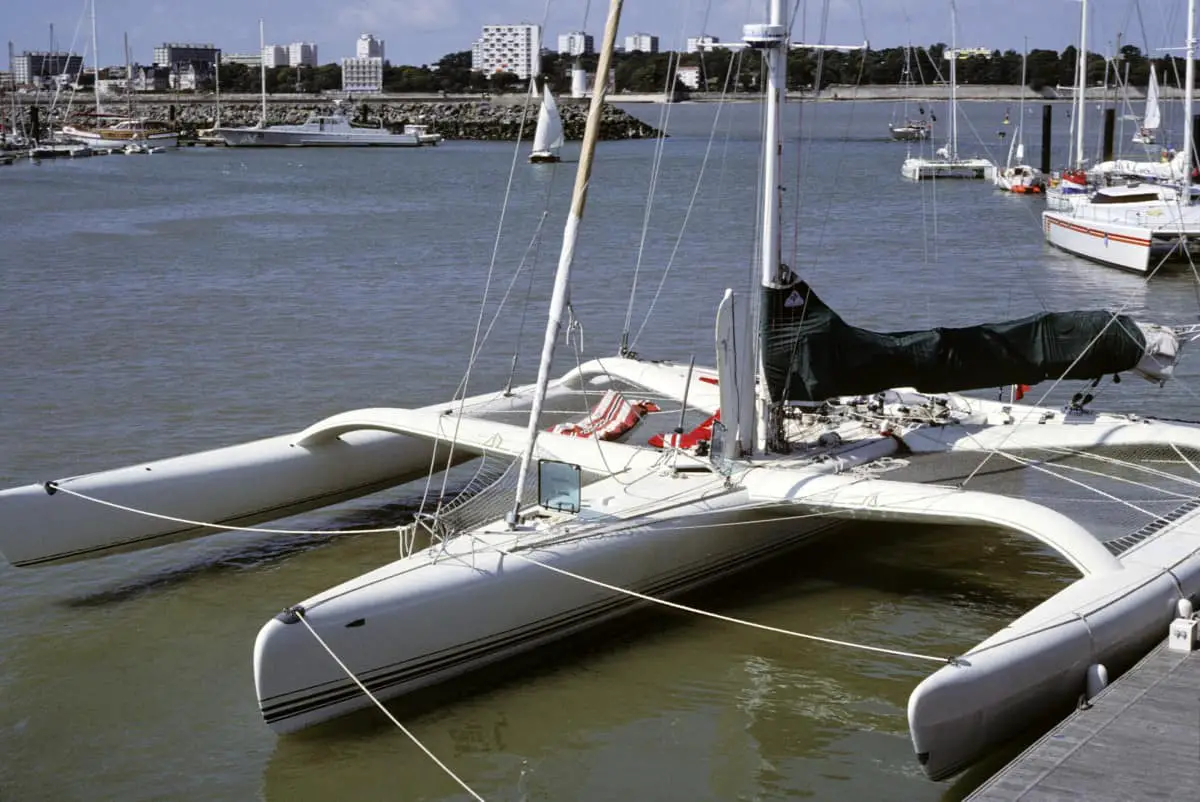
As an Amazon Associate, we earn from qualifying purchases. We may also earn commissions if you purchase products from other retailers after clicking on a link from our site.
Trimarans are growing in popularity worldwide, due to their light construction and high stability these multihulls are even faster than catamarans. Trimarans are still one of the lesser-known boat types so in this article ill be checking out some of the most popular models.
The best trimarans include:
- The Neel 43
- The Neel 47
- Dragonfly 28
- The Pulse 600
- Corsair 37
These tris are built with your safety in mind while also packing powerful speed and a wide array of comfort features to optimize your sailing experience , some are even foldable making them possible to load on a trailer and transport to the sailing destination of your choosing.
In this article, I have created a list of the 16 best trimarans in the market and their unique features. You’ll also learn the best options for different purposes such as circumnavigation, weekend sailing, racing, and more.
Table of Contents
What Is a Trimaran?

A trimaran is a multi hulled sailboat with three individual hulls; the main hull ( vaka ) and a pair of outrigger hulls ( amas ). These smaller outrigger hulls are attached to the main hull using beams.
While trimarans have a rich history dating back nearly four millennia, these types of sailboats have only gained popularity in the late 1900s and early 2000s.
Trimarans are primarily used as personal boats for sailing enthusiasts or racing. These sailboats draw their versatility from their lightweight design, making them faster and easier to handle at sea when compared to single-hulled boats (monohulls). Additionally, the three hulls also contribute to better stability, making it very hard to capsize (although more likely than a cat according to this study)
Trimarans come in various sizes, and some can be as small as 19 feet (5.8 meters) in length, while others go up to 60 feet (18meters). They’re also used for different purposes. Most trimarans are used for racing and recreational purposes, although some units are still used as ferries.
As with all things, to find out which is the best we need to understand what it will be used for. There is a big difference in requirements between a boat used for day sailing compared to offshore around the world sailing.
The list below highlights the best trimarans for different purposes.
Best Trimarans For Cruising, Liveaboard and Sailing Around The World
The Neel 43 is a French trimaran best suited for cruising. Its key features include:
- Easy maneuverability on the open sea by only a small number of crew members
This unit is also built for comfort, ideal for more extended travels. This 43-feet (13-meter) trimaran is also made with recyclable and bio-sourced materials, highlighting the manufacturer’s commitment to environmental consciousness.
This trimaran has a base price of €329,000 excluding VAT. This translates to approximately $370,138.
2.Neel 47 Possibly The Best
Named the best full-size multihull for 2020, the Neel 47 is a strong contender for one of the best trimarans in the market. This 47-foot (14.3-meter) long trimaran features optimized exterior and interior ergonomics for a unique design and look.
Still on design, the Neel 47 is ideal for couples looking to take a weekend off or spend some time as liveaboard. It has a spacious owner’s cabin and two bedrooms. It also features a spacious living room and kitchen and is optimized to ensure comfort for a couple.
The Neel 47 also has two basic guest cabins so your friends or children can tag along on your sailing adventure. Accordingly, this unit is ideal for those looking to explore the sea for the sheer joy of sailing.
The Neel 47 comes at a 571,139 euro ( $643,600 ) price tag, excluding VAT.
3. Rapido 60 The Fast and Comfortable Circumnavigator
The Rapido 60 offers a blend of performance, safety, and luxury, making it one of the best options for bluewater sailing. Measuring 59.3 feet (18 meters) in length, the Rapido 60 is an imposing unit. It’s made from lightweight sandwiches and carbon materials that provide speed and strength, allowing it to stand up to strong ocean currents.
The Rapido 60 also has spacious living spaces and is built for comfort at all points of the sail. Its design also optimizes safety. While it’s an ideal option for circumnavigating, it’s also an excellent choice for racing due to its speed.
This is also the same boat that The Youtube channel La Vagabond just purchased.
The Rapido 60 retails at $1,400,000 .
4. Rapido 40
The Rapido 40 measures 39.4 feet (12 meters) in length and is ideal for cruising around the world. The Rapido 40 features twin “C” foils, which provide added lift, enhancing its speed and performance whether you are sailing downwind or upwind.
Because it has C foils, this trimaran doesn’t have a central daggerboard, increasing interior space. Accordingly, it’s an excellent option for couples looking to cruise and enjoy great performances .
The Rapido 40 is made from high-tech all-carbon materials for a lightweight yet sturdy design. This material is also used for the countertops and furniture, and the cork flooring adds a touch of style.
This trimaran retails for $595,000 , making it a cheaper option than the Rapido 60.
5. Dragonfly 40
The Dragonfly 40 measures 40 feet (12 meters) in length. It features high-comfort standards, making it one of the best trimarans in the market for taking your family for a cruise. Because of its larger size, it has a better capacity, being capable of accommodating six to eight people, so you can bring your family and friends along.
It’s easy to navigate and extremely safe. With a maximum speed of 24 knots (44.5 km/h), this trimaran also provides fast speeds to make your cruise even more exhilarating.
The Dragonfly 40 retails from €509,000 exclusive of VAT, which rounds up to $572,000 .
6. Dragonfly 32
The Dragonfly 32 is a high-performance cruiser. Like the Dragonfly 28, this unit features a contemporary design for racing. This trimaran can accommodate five to seven crew members.
Although slightly longer than the Dragonfly 28 with its 32-foot (9.8-meter) length, the Dragonfly 32 has a max speed of 23+ knots (42.6+ km/h), making it one of the fastest trimarans for racing. This unit also has comfortable accommodation, which makes it an ideal option for a weekend cruise with family and friends.
The Dragonfly 32 has a base price of $350,000 .
7. Corsair 37
Thanks to a variable draft with a retractable rudder, the Corsair 37 is an ideal choice for shallow water exploration. This 37-foot (11.3-meter) long trimaran features advanced foam-cored construction designed for safety, making it virtually unsinkable.
The carbon hulls minimize weight, this makes for a lightweight ocean exploration sailboat with blistering speeds. One of its selling points is that this trimaran has previously been used for Arctic expeditions, possibly marking it as one of the better options for circumnavigation and offshore sailing in the northern waters.
This trimaran has a base price of $189,000 but can go up to $204,125 .
Best Trimarans For Day/Weekend Sailing
8. dragonfly 28.
The Dragonfly 28 is a 28-feet (8.75-meter) long sailboat that can accommodate up to five people. It comes in two versions:
- Touring version: This version is ideal for families.
- Performance version: This is built to provide optimal performance for the sports enthusiast within you.
It clocks a maximum speed of 22+ knots (22+ km/h) and is beam-folded. It’s an excellent option if you want a high-performance, comfortable yet smaller unit for your day or weekend cruise.
The Dragonfly 28 starts at €188,280 inclusive of VAT, which comes to around $211,600.
9. Dragonfly 25
Like other trimarans under the Dragonfly brand, this 25-foot (7.62-meter) trimaran is great for both racing and short term cruising. However, this high-performance boat delivers easy handling, making it perfect for couples looking to take a ride out over the weekend and seasoned sailors looking for an exhilarating racing adventure.
The Touring version features a lightweight build and offers comfort and accommodation to keep you, and the few guests you can fit, comfortable during the ride. This trimaran also has a Sport version, which is optimized for racing.
The Dragonfly 25 retails from EUR 86,800 .
10. Pulse 600
The Pulse 600 trimaran is a compact sailboat. It’s made from lightweight, carbon-reinforced construction and vacuum-formed materials for optimal speed. This trimaran is an ideal option if you are looking for speed.
It also features ample deck space, greater stability, and volume than most trimarans of similar size and build.
This trimaran measures 19.8 feet (6 meters) in length and can be sailed single-handedly by one person with minimal effort. The Pulse 600 has a base price of $38,800 , which places it in the lower price range.
The F-22 is one of the smaller trimarans in the market. Developed in New Zealand, the F-22 is a folding trimaran built for speed. The hulls are made from narrow fiberglass tied together using fiberglass beams and aluminum, minimizing bulk while optimizing speed.
The F-22 is roomy and is not as pricey as other models in the market. This trimaran has two main versions:
12. 2019 Weta Trimaran
The 2019 Weta trimaran is a 14.5-foot (4.4-meter) trimaran featuring a carbon frame, centerboard, rudder foil, and rudder shock. The hull is made from fiberglass and foam. The Weta is built for strength and speed based on these lightweight materials.
The 2019 Weta trimaran is easy to sail and is worth considering whether you want to take a quiet sail, race with your friends, or take kids to a sailing lesson. It has a simple design and is easy to set up independently. Thanks to its collapsible design, this trimaran is easily stored away with minimal space demands.
13. WindRider 17
The 17.4-foot (5.3-meter) WindRider 17 is one of the more versatile trimarans in the market. It packs high performance for a low cost. This trimaran has a light rotating mast to boost performance, and a full-battened mainsail optimizes visibility.
This sailboat is made from rotomolded polyethylene, which is more durable than fiberglass and demands less maintenance.
The WindRider 17 has a comfortable interior and can fit six adults. This is an ideal choice for social sailing for a couple or a family and friends. It’s easy to ride, and a shallow draft allows easy maneuverability.
14. Astus 22.5
If you’re looking for something small but still comfortable, this 22.5-foot trimaran is for you. Built for speed and maneuverability, the Astus 22.5 has optional foils to optimize speed. The modern design, coupled with the spacious interior, can fit up to four beds. Accordingly, this trimaran is suited for family outings.
This trimaran also has a foldable design, collapsing to only 16 feet (4.9 meters) for easy storage.
15. Multi 23 Trimaran
The Multi 23 trimaran has a contemporary design, featuring a vinyl ester and PVC foam core construction. The section below the waterline is made of solid glass for a sturdy base.
The beams are made of lightweight carbon, and the trimaran features a 33-foot (10-meter) aluminum rotating wing mast for optimal harnessing of the wind. While ideal for weekend excursions with family, once rigged with the asymmetrical spinnaker will get your heart pumping.
This trimaran packs high performance at a lower cost than most other options in the market. It’s a good choice if you are looking for a high-performing unit without spending an arm and a leg.
16. Challenger Class Trimaran
The Challenger Trimaran 15 is the best choice for persons with disabilities. It’s designed to provide disabled sailors an opportunity to explore their passion for sailing without worrying about aspects like safety or operation.
A man named Geoff Hold circumnavigated the British Isles in 2007, becoming the first disabled person to achieve this feat. He had quadriplegia.
Living up to its name, the Challenger can withstand harsh weather conditions while blending performance with speed.
Final Thoughts
Admittedly, no trimaran is best for everyone. But whether you are looking to race with your friends, take your loved ones or friends for a cruise over the weekend, or circumnavigate the ocean, you can rest assured that these lightweight trimarans will deliver speed, safety, and comfort to make it worth your while.
These brands are innovatively designed and feature intricate safety mechanisms that make them virtually unsinkable. Give them a shot and begin your ocean adventure.
- Basco Boating: A Comprehensive Guide & Introduction to Trimaran Yachts
- TheBoatAPP: New Trumarans: Which are the Best Ones
- Corsair Marine: Corsair 37
- Dragonfly: Dragonfly 28
- Rapido Trimarans: Rapido 60
- Neel Trimarans: Neel 43
- Yachting World: World’s Collect Yachts: Maxi Trimaran MACIF
- Yachting Monthly: Dragonfly 28 Performance
- Rapido Trimarans: Rapido 40
- Dragonfly: Dragon 32
- Dragonfly: Dragonfly 40
- Yachting World: Dragonfly 40 yacht tour: This cruising trimaran can do 24 knots
- Dragonfly: Dragonfly 25
- NauticExpo: Dragonfly 25
- Yachtworld: Corsair 37 boats for sale
- Cruising World: Neel 47 Trimaran: Best Full-Size Multihull0
- Neel Trimaran: Neel 47
- Multihull Solutions: NEEL 47 Boat Review | Cruising World
- Yacht World: 2022 Neel 47 for sale
- Farrier International: F-22
- Weta Marine: The Boat
- WindRider: WindRider 17 Trimaran Sailboat
- Astus Boats: Astus 22.5
- Boat-specs: Multi 23
- National Maritime Museum Cornwall: Challenger Trimaran #1 – BC26
Owner of CatamaranFreedom.com. A minimalist that has lived in a caravan in Sweden, 35ft Monohull in the Bahamas, and right now in his self-built Van. He just started the next adventure, to circumnavigate the world on a Catamaran!
Leave a Reply Cancel reply
Your email address will not be published. Required fields are marked *
Save my name and email in this browser for the next time I comment.
Recent Posts
Must-Have Boat Gear for Catamaran Sailors!
Sailing is probably the most gear-intensive activity I've ever done; there are so many decisions to be made about what gear to buy now, for tomorrow, and what to definitely never buy. The gear on...
6 Best Trailerable Trimarans For Bluewater and Coastal Sailing
Having a boat costs a lot of money, even when you are not using it, marina fees, etc. And once it is in the water most sailors never go very far from their "home marina" and sailing will be somewhat...

Mainsail handling: Advanced sailing techniques for catamarans and multihulls
Knowing how to set up a multihull’s mainsail is crucial. Brian Thompson, one of the world’s most experienced multihull sailors, and one of the directors at Doyle Sails Solent, shares his expert tips.
A mainsail cannot know whether it is hoisted on a monohull, a catamaran or a trimaran. The principles of sail trim are universal.
On all types of yacht the traveller, mainsheet, outhaul, halyard and the Cunningham can be used to control the sail, and the information from the tell-tales can be used to help judge how much power the sail is providing and whether it is well trimmed.
But there are some important and some subtle differences between monohulls and multihulls.
Because the multihull is so much more stable at low heeling angles, the heel angle is harder to use as a reference for when the boat is overpowered. Rather like a car versus a motorbike; the car heels only a little when pressed, while on the motorbike it’s much more obvious when the limits are being approached.
So on the multihull the decision of when to depower and to reef has to be influenced more by other inputs rather than just heel angle.
Generally speaking, a multihull’s wide beam allows for a much longer traveller than on an equivalent monohull, so there is much better control of the boom position when reaching and downwind sailing. This can make a boom vang/kicking strap unnecessary.
A multihull does not roll downwind like traditional monohulls, so the risk of an accidental gybe is much reduced, though not eliminated. Additionally the boom is less of a danger to the crew as it is often high and above a long cabin top – though that can then mean that visibility to the mainsail is more restricted, and you may have to move to find the best spot to look at the mainsail trim.
With the shrouds further outboard and often further aft than on a monohull, a multihull’s mast is well supported and permanent backstays and runners are not required. This allows for a bigger roach on the mainsail and a more powerful sail for the same mast height. The big roach on the main then necessitates full-length battens with cars on the mast, rather than short battens.
Inflexible mast
The high righting moment of the multihull combined with a lack of backstay or runners, means that the mast has to be strong and stiff and is not adjustable in bend under way, whether it is a fixed or wing mast. So it won’t be possible to flatten the mainsail with mast bend, as you might do in a monohull with a backstay.
And because of that wide shroud base, and consequent reduced mast compression, some performance multihulls can have rotating wing masts, to reduce the aero drag of the mast and clean up the airflow to the mainsail. This does not really change the mainsail trim but it is a slight performance gain.
But with the shrouds further aft and with full battens in the mainsail, it can be more of a challenge to reef downwind, as the battens and sail will chafe against the shrouds more.
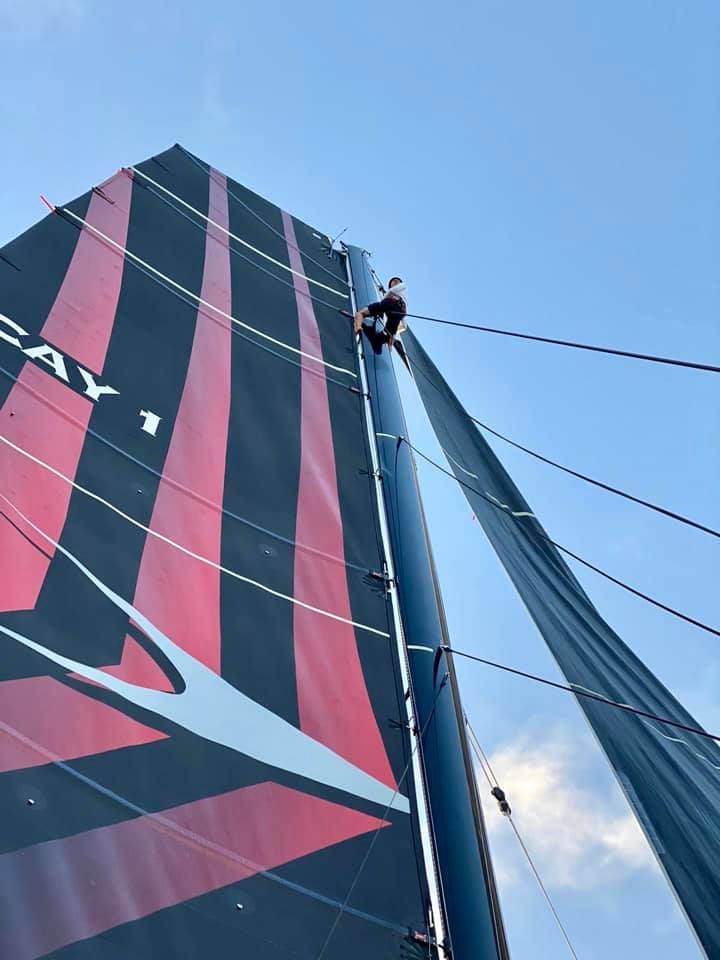
Knowing when to reef
The fundamental control on the power of the mainsail is what size sail you have decided to set. As the wind increases it is very important to reef at the appropriate wind speed and not wait too long, otherwise the boat becomes overloaded.
For instance, when racing on a MOD 70 trimaran, we’d usually go to first reef at 20 knots true wind speed, upwind and downwind. Of course, you could temporarily carry full main to 25 knots, if you are careful on the helm and with sail trim, but the boat will be slower as the sails will be eased and creating more drag. It is also far more dangerous to overload a 7-tonne trimaran that can capsize.
However, on delivery with the same boat, the reefing wind speed would be 17 knots True, as we reef as early as we can without losing significant speed.
As a guide to boat speed on delivery, upwind we are happy to be doing 16 knots and downwind 25 knots, and we want to achieve those speeds with the minimum of sail. When racing of course we try to go faster with a 20 knots target speed upwind and 30 knots downwind!
As the boat is very powerful, we would go to second reef at 26 knots and third reef at about 33 knots on the MOD70, less on delivery of course.
When cruising or on delivery, I always like to learn the minimum wind speed that I can reef while maintaining a similar boat speed. That way there is less stress to the boat, rigging and crew. The centre of effort of the sails also goes down, so heel and pitching reduce. Downwind, the bow down trim will reduce and the boat will be safer and lighter on the helm.
If the wind is expected to increase, I’d confidently change down at these minimum wind speeds, but if the wind is oscillating up and down in strength I would make sure the wind was really holding above that minimum wind speed before reefing.
And if unsure of what is going to happen with the wind – when sailing into squalls, into night time, or into gusty offshore winds near high land and headlands – then I would always aim to err on the side of caution. When cruising, being set up for the higher wind speeds than expected, is an old axiom.
The MOD is a super high performance trimaran of course, but to find out what the limits should be on a popular cruising cat I spoke to Graham Laver at Ancasta, who sent me the sailing guide for the Lagoon 52.
Interestingly, it’s not that different. With the standard pinhead mainsail, the first reef is recommended to go in at 21 knots both upwind and downwind, and in less wind with the optional square-top main, or in a bad sea-state. The second reef is recommended at 33 knots and the third is at 40 knots. These are higher winds than the MOD70, but then it’s a less powerful, heavier boat with a shorter rig.
Here we are talking all the time about wind speed in True, which requires a reasonably accurate instrument system. This is now common on most boats, but it’s very worthwhile to put in a little time to calibrate this as well as possible.
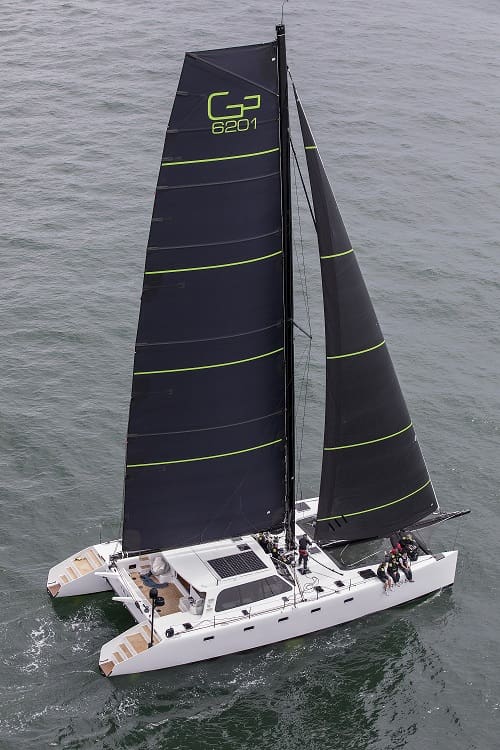
Not all about numbers
And this opens up the whole subject of instrument calibration. In essence the wind cups will, out of the factory, read the correct upwind and reaching apparent wind speed, but to get accurate true wind speed, the calibration of wind vane angle to the centreline, the boat speed and the compass are all very important so that the wind speed reads the same, tack to tack.
Downwind, the windspeed will often overread due to the upwash of wind from the square-top mainsail at full hoist, or a spinnaker, so be aware this may add about 2 knots to the windspeed. This can be calibrated out with advanced instrument systems
Even if the instruments are really well calibrated I like to always imagine how I would sail if they suddenly stopped working. So what are the other clues to use to estimate the wind speed?
Very important is the look of the wind on the water, the amount of white caps, as in the classic Beaufort scale, and also the feel of the boat: the speed through the water, the subtle heel angle changes, the amount of helm that is needed, and the balance of the boat.
For instance, how much you have to depower the boat to achieve a certain boat speed is a good guide. If I have eased quite a lot of mainsheet and traveller and the boat speed is as desired, and the front 20% of the main is luffing, then its probably past time to reef, even without looking at the true wind speed numbers.
In 2001, I sailed in the Mini Transat Race. At that time those boats had no wind instruments and it soon became second nature to know wind speed and direction, day or night. It’s a good exercise to always check your estimate of the wind speed against the instruments.
Of course you want your instrument and power system to be super reliable and well calibrated, so you don’t lose wind data on a dark night, but also you want to blend that information with your own judgement of the situation and have confidence in that judgement/intuition. The wind number is not an absolute guide to the forces on the boat anyway.
For instance, the same 20 knots wind speed is less powerful in the warm tropics than in the cold Southern Ocean. And on a foggy day with cold water and warm damp air, the wind is less powerful as there will be a lot of wind shear and the wind at the deck level is much less than the wind at the masthead.
So on a day when the wind is better mixed, the same 20 knots at the masthead is more powerful than that foggy day with laminar flow wind.
To summarise the discussion on reefing limits: it’s not just about the digital TWS number, but also what is right for the conditions you feel, the feedback from the behaviour of the boat, your predictions about what is going to happen in the future, the goal of the sailing and the abilities of the crew.
Reefing tips
Reefing is easy to do upwind or reaching, and I often slow right down to reef, and then get going again when the reef is finished. This keeps the apparent wind speed down, and makes for a safer platform for the crew. Downwind it can be trickier, with the friction of the sail and full length battens on the shrouds. If it’s not possible to head up, then winching the luff down at the same time as the leech should get the sail down slowly.
On very fast boats such as MOD70s you can keep going fast enough downwind to keep the apparent wind angle at 50° just with the gennaker, and then the mainsail can flap without hitting the shrouds when the traveller and mainsheet are eased. Then, once you are reefed, you can get back to your 37° to 40° of apparent wind angle and 30 knots of boat speed!
Mainsail trim
So now we have the right size mainsail for the situation, how are we best going to trim that sail?
The big controls are the mainsheet and the traveller, and the minor controls are the outhaul, halyard and Cunningham (and on some boats some of these last three are not adjustable).
So let’s talk first about upwind and reaching in moderate, flat water conditions, when the mainsail is trimmed the tightest – let’s say in 12 knots of wind.
For the mainsheet, you can keep trimming until the top telltale is folded to leeward of the leech about 20% of the time, and the other 80% of the time it, and all the other leech telltales, are flying. That is max main trim, giving the straightest leech and minimum twist. I like to think of this as 1 out of 10, or ‘minimum twist’. I like to look up the back of the leech sometimes to assess the amount of twist.
In fact, if you can then mark the mainsheet at this position along a scale on the boom, you could have marks from 1 to 10, with 1 being the most trimmed in you can go, and with 10 being the most eased. This is ‘maximum twist’, perhaps used when you are reefing.
I really like to have marks on the mainsheet (and everywhere else it might apply), as it’s easy to then repeat your settings, and also to pass on information to the rest of the crew in a concise form. In these upwind conditions, position the traveller so the clew of the mainsail is on the centreline.
As it gets windier, the first thing I would do is ease just a little mainsheet, to mark 2 or 3 on your scale so that the top of the main opens a little to reduce the power up top, and to reduce all of the loads. All the leech telltales will be flying now.
After that start easing the traveller down a little to depower further. Then, when you have 20% of the front of the sail luffing, its certainly time to reef, which will provide the same power, with less drag, so will be faster and safer.
In lighter winds you’d again have slightly less leech tension, perhaps also at twist mark 2 or 3, and the traveller slightly higher up the track so the clew still stays on the centreline. In light conditions you might use a little lazyjack or topping lift to stop the weight of the boom closing the leech. But by then most people will be motorsailing!
Use those leech telltales again when sailing downwind and reaching to set the correct twist through the mainsheet, and use the traveller to set the correct angle of the whole sail to the wind.
In waves you need to have more twist than in flat water as the apparent wind angle changes much more with all the heeling, pitching, and course changes, so you need a more tolerant setting.

Tweaking minor controls
The use of the minor sail controls can depend on the boat set up. Most boats will have an outhaul, to control the foot of the mainsail, and this will be tighter for strong winds and eased a little in the moderate, downwind and light conditions.
You can use either the halyard or Cunningham to control the luff of the sail. The goal is to barely eliminate the wrinkles in the luff and the sag between the batten and intermediate cars, but no more than that. Downwind you can ease the luff tension but still get rid of the wrinkles. On a bigger multihull with full battens, you can’t significantly move the draft forward of the sail with more luff tension or bend the mast like you can in a smaller cat.
The lazyjacks or topping lift should be left loose enough not to interfere with the mainsail but tight enough to hold the boom up if you forget to tighten them up before reefing or dropping the main.
Setting up your mainsail
When you first put on a fully battened mainsail on a multihull, the first thing you’ll notice is that it’s heavier than on an equivalent length monohull: the area is higher with the big roach, the full-length battens heavier, plus the weight of the mast track cars that go with the battens. The sail is typically made in a tougher cloth because the righting moment of the boat is greater than a monohull. So once you have that heavier sail into the lazyjacks, here are some tips for setting it up properly.
- Head: Set the correct distance between the head ring and the mast. If it’s adjustable you’ll find that bringing the head ring closer to the mast will put more fullness in the top of the main and make the leech tighter.
- Battens: Check the batten tension: ideally you want to be just getting rid of any vertical creases around the batten pockets. Too tight and the sail will be overly stressed and you can see the batten making the sail locally deeper.
- Depth: The mast is not tuneable in bend without a backstay, but one trick with full batten mains is to tune the thread that attaches the batten car to its mainsail track car. If you have more thread showing then the mainsail will get locally deeper as it is the equivalent of straightening the mast.
- Foot: Make sure the tack is lashed with the appropriate distance to the mast track so that it follows the luff of the sail. Ensure the clew is lashed down close to the boom and the outboard reef lines are run in the correct position.
- Reef lines: Due to the righting moment of the boat, the loads on the reef lines are higher than a monohull. Bigger multihulls will benefit from a hook arrangement for the reef so that it engages with a loop or a shackle on the leech of the main. This can help with chafe problems on lines and lessen compression on the boom.
- Telltales and stripes: Cut strips of red spinnaker cloth to use as telltales on the leech end of each batten. Big is better. The top one is particularly critical to make sure the mainsail is not over-trimmed. One trick for night sailing is to sew a little retroreflective tape to the back end of the telltales so they show up well when a flashlight is shone on them.
Draft stripes are useful on the mainsail to look at the shape at three different heights, and these can also have retroreflective alongside them for nighttime sailing

Brian Thompson – Director, Doyle Sails Solent
Brian Thompson is one of the world’s foremost multihull sailors and has sailed more miles in multihulls than any other British sailor.
Thompson, 58, has been sailing since he was three years old. He has competed in virtually every major offshore race, including the Mini Transat Race, the Vendée Globe, round the world records for the Jules Verne Trophy, the Route du Rhum and the Volvo Ocean Race.
Thompson has held most offshore records over the last three decades, including spending 11 years sailing with the American adventurer Steve Fossett. He has become the go-to helmsman for multihull sailing records and during his more recent time aboard the MOD70 Phaedo3, helped set ten world records. Thompson is currently campaigning the MOD70 Argo and is one of the directors of Doyle Sails UK.
For more information on Doyle Sails UK click HERE
Sports | Santa Anita horse racing consensus picks for…
Share this:.
- Click to share on Facebook (Opens in new window)
- Click to share on Twitter (Opens in new window)
- Click to share on Reddit (Opens in new window)
- Click to print (Opens in new window)
- High School
Sports | Santa Anita horse racing consensus picks for Saturday, March 23, 2024

The consensus box of Del Mar picks comes from handicappers Bob Mieszerski, Terry Turrell, Eddie Wilson and Kevin Modesti. Here are the picks for thoroughbred races on Saturday, March 23, 2024.
Trouble viewing on mobile device? See consensus picks
Enjoy the consensus horse racing picks online? Subscribe
- Newsroom Guidelines
- Report an Error
More in Sports

Los Angeles Angels | Season Preview: 2024 Angels believe they will surprise the baseball world

Los Angeles Angels | Angels 2024 season preview: How the roster looks

Lakers | Lakers score 150 points in win over Pacers for 3rd consecutive victory

Los Angeles Dodgers | Shohei Ohtani to address the media on Monday amid allegations, investigations
Better Derby Betting is back! Here's how to get tickets to hear from our racing experts

There's nothing more stressful than walking up to a betting window at Churchill Downs on Kentucky Derby Day and greeting the mutuel clerk with a blank look on your face when they ask how you'd like to bet.
That's why we're once again hosting our popular Better Derby Betting event to help you take the guesswork out of the betting game and hear from the experts on how you should bet the horses at the historic 150th Run for the Roses on May 4.
The Courier Journal's lead horse racing reporter Jason Frakes will host the ticketed event on Wednesday, April 24 alongside a panel of experts including Ed DeRosa of Horse Racing Nation , David Levitch , a former University of Louisville basketball player who is heavily involved in thoroughbred racing through the DC Racing ownership syndicate and as a handicapper, and Bailey Armour of 1/st Bet .
The ticketed event will take place at Ten20 Craft Brewery , 1020 E. Washington St. Event doors open at 6 p.m. so you can enjoy the food and drinks for purchase. The discussion will begin at 7 p.m. and last approximately 90 minutes.
Tickets are $30 for general admission and $20 for subscribers, plus applicable taxes and fees. Each includes one drink voucher and Brisnet Past Performances for Kentucky Oaks and Kentucky Derby contenders. Food will be available for purchase on-site at MozzaPi and Happy Belly Bistro .
You can purchase tickets at usatn.enmotive.com/events/better-derby-betting-event . Be sure to grab them fast as this event always sells out. Subscribers, be sure to check your e-mail for a discount ticket link!
Not attending the Kentucky Derby in person? Don't worry, these tips will still help you place a bet virtually on the Churchill Downs' betting website ( twinspires.com ) and app ( TwinSpires ), which are available outside of the racetrack for those looking to place a bet.
You're required to create a username and password, but signing up is free and doesn't take much time. You can transfer money from your bank account into your Twinspires account to place your bets.
So join us and let the experts tell you how to bet the horses at the 2024 Kentucky Derby.
Reach Features & Lifestyle Editor Kathryn Gregory at [email protected]
- Transfer Centre
- Live on Sky
- Get Sky Sports
- Kick It Out
- Black Lives Matter
- British South Asians in Football
- Work @ Sky Sports
- Terms & Conditions
- Big Race Entries
- All Meetings
- Gavea (BRZ)
- Compiegne (FR)
- Fontainebleau (FR)
- Le Croise-Laroche (FR)
- Mahoning Valley (USA)
- Philadelphia Park (USA)
- Turf Paradise (USA)
- Will Rogers Downs (USA)
14:22 Compiegne (FR)
Brissac handicap chase.
- Off Time: 14:29:39
Little King (FR)
Authentique cotte (fr), jango d'airy (fr).

Kenzoriko (FR)
- Form DF-P11
- Weight 11-9
- Trainer J Delaunay
- Jockey C Riou

Besan D'or (FR)
- Form 8526-2
- Trainer Lageneste Macaire
- Jockey L Zuliani

- Form 391P-8
- Weight 11-7
- Trainer H Merienne
- Jockey N Gauffenic

Quel Patron (FR)
- Form P191-7
- Weight 11-4
- Trainer P Journiac
- Jockey D Lecomte

- Form 39-881
- Trainer S Dehez
- Jockey N Ferreira

- Form 013-43
- Jockey K Dubourg

Matnight (FR)
- Form 05-2P3
- Weight 11-1
- Trainer B and Beaunez
- Jockey L Vandamme

Choeur Desaintonge (FR)
- Form 39-223
- Weight 11-0
- Trainer Gab Leenders
- Jockey F Giles
Jigtsar Pam (FR)
- Form 27-P8P
- Trainer Y Fouin
- Jockey T Andrieux
Jigtsar Pam (SP), Kenzoriko (11/4), Choeur Desaintonge (7/2), Little King (4/1), Authentique Cotte (5/1), Jango D'airy (5/1), Besan D'or (13/2), Matnight (20/1), Quel Patron (20/1)
Kenzoriko (FR) 5-1 (10-12) won at Pau 2m 3f hvy in Feb beating Just A Castle (11-0) by 7l, 10 ran.
Besan D'or (FR) 5-1 (10-12) 6th of 10, 15l behind Caligramme (10-12) at Pau 2m 3f hcp hvy in Dec.
Jango D'airy (FR) 9-1 (11-4) 8th of 14, 7 1/4l behind Haddexa Des Obeaux (10-8) at Auteuil 2m 1f hcp sft in Mar.
Quel Patron (FR) 14-1 (11-2) 7th of 9, 12 1/4l behind As Magnetic (10-10) at Angers 2m 3f hvy in Feb.
Little King (FR) 28-1 (11-0) 8th of 18, 15l behind Joana Conti (11-2) at Auteuil 2m 2f hcp gf in Feb.
Authentique Cotte (FR) 5-1 (10-7) 4th of 11, 8 1/2l behind Nomade (10-7) at Angers 2m 3f hvy in Feb.
Matnight (FR) 5-4fav (11-4) 3rd of 6, 19l behind Bat Drim (11-0) at Compiegne 2m 3f hvy in Mar.
Choeur Desaintonge (FR) 11-2 (10-1) 3rd of 8, dist behind Glasgow Du Berlais (10-5) at Fontainebleau 2m 6f hcp hvy in Feb.
Jigtsar Pam (FR) 18-1 (10-6) at Auteuil 2m 3f hcp lst hvy in Mar.

IMAGES
VIDEO
COMMENTS
Series 7 - Toni's Tips for Two Handed Racing. How to right a Wētā Trimaran after Capsize. Series 5 - Upwind Sailing. How to Beach Launch on a Wētā Trimaran. Series 3 - Downwind Sailing. How to hoist and drop the 12.9m Gennaker on the Wētā Trimaran. Racing Basics. Series 1 - Rigging Your Wētā. Series 8 - Racing Starts.
Trimaran racing involves sailing three-hulled boats known for speed and stability. It combines skill and strategy, with races like regattas and match racing. Safety, teamwork, and navigation are key. The sport is evolving with technological advances and growing popularity, highlighting the importance of ecological awareness and sustainability ...
For instance, when racing on a MOD 70 trimaran, we'd usually go to first reef at 20 knots true wind speed, upwind and downwind. ... Reefing tips. Reefing is easy to do upwind or reaching, and I ...
Unroll the sail and cut the excess plastic. Roll up again and use tape to hold edges together. Insert the mast into the hull firmly, then instal the sail onto the mast with pointy end forward, adjust the sail so it is just a little bit above the hull. Use plastic glue to fasten sail to mast.
Catamaran Sailing Techniques Part 6: Coping with heavy weather - with Nigel Irens. Everything you need to know about catamaran and multihull sailing, from techniques and tips to chartering and ...
Sailboat Racing Tips: Rules at the Start. Sailing World Racing Editor Mike Ingham explores the rules to know for a clean start. By MIke Ingham. March 7, 2022. More: How-To, racing rules of sailing ...
So to summarize this example; to adjust a mainsail foot from one suitable for a strong 30k wind to the camber required to more efficiently match a 5kt wind, one needs to slacken the outhaul 3.3% (4.3-1) of the foot length. For a W17, this equates to 3.3% of 2400mm, or moving the clew forward 80mm .… rather more than most sailors do I suspect.
Connects you with other Weta owners throughout North America. Provides the structure for Weta Racing and Social Events. Regulates class rules and maintains one-design practices. Attracts top-notch sailors by upholding high racing standards. Supports this website and WCNA events throughout the year. Includes a Forum of racing tips, event reports ...
Some tips on how to tack your Weta Trimaran with Miranda Powrie. The tack is split into its different aspects and analysed. Pick up some tips for perfecting ...
trimaran-idec.com. MOD 70. The goal was a simple one: create a class of turnkey 70-foot racing trimarans that would be relatively cheap to run and still provide spectacular racing, both inshore and across the world's oceans—think the spectacular ORMA 60 circuit of 1980s and 1990s with a little less chaos.
The fastest offshore racing designs ever built, the foiling 100ft Ultim trimarans, will go head-to-head in a solo round the world race in 2023. The Ultim class has announced the first single ...
Fore and aft movement of the lead position primarily controls foot depth. Moving the lead forward will increase depth in the lower part of the sail, while moving it aft will flatten it. The side ...
France / La Trinité-sur-mer - Dona Bertarelli and Yann Guichard are once more set to take on the Jules Verne Trophy, held since 2017 by Francis Joyon and his...
Adam Cort. Jun 21, 2022. The Ultim class is set to race round the world in 2023. Photo courtesy of Yvan Zedda/OC Sport Pen Duik. For years now, maxi-trimarans, both solo-sailed and fully crewed, have been racing the clock on their own around the world in an effort to set ever faster records for the world's fastest circumnavigation under sail.
The first "big Corsair trimaran" - and so for short stays it's the Corsair 880 you want. Designed for up to a week aboard, this sailing trimaran has separate cabins, a private heads, and a proper saloon and galley. Headroom is stunning for a 28 (or 29) footer and you get a helming experience much more apt for longer durations than what ...
In a move comparable to Alain Colas "racing" the 236ft four-masted monohull Club Mediterranée in the 1976 OSTAR, Yann Guichard raced the 131ft Banque Populaire V (now rechristened Spindrift 2) across the Atlantic singlehanded in the 2014 Route du Rhum, again fitting the boat with a shorter rig.He came second to Loick Petron sailing a smaller, more easily handled boat.
The SeaCart trimaran performs as brilliantly off the water as it does on with its super-light and efficient harbor folding system, making light work of trailering. Notoriously easy to manage and maintain, the SeaCart 26 One Design is the ultimate day racing trimaran, designed for both course and inshore/coastal distance racing.
To have the most fun without the stress at this year's event, we recommend ordering your Raingutter Regatta Racing Trimaran Kit a month ahead of time, consulting with your troop's racing committee regarding the rules and specifications, and dropping your boat off for inspection early, typically no later than the morning of the event (usually 9 ...
This trimaran retails for $595,000, making it a cheaper option than the Rapido 60. 5. Dragonfly 40. The Dragonfly 40 measures 40 feet (12 meters) in length. It features high-comfort standards, making it one of the best trimarans in the market for taking your family for a cruise.
Knowing how to set up a multihull's mainsail is crucial. Brian Thompson, one of the world's most experienced multihull sailors, and one of the directors at Doyle Sails Solent, shares his expert tips. A mainsail cannot know whether it is hoisted on a monohull, a catamaran or a trimaran. The principles of sail trim are […]
1980 40-foot racing trimaran Gordano Goose built. 1982 40-foot racing trimaran IT82 wins its class in Round Britain race. 1982 50-foot racing catamaran Vital takes third overall in the Route du Rhum. 1983 80-foot racing catamaran Formule Tag is built; in 1984 she sets new 24 hour record of 512.5 NM
Saturday Day 2 NHC. Follow along as horseplayers try to pick winners on Day 2, which has 8 mandatory and 12 optional races. Mandatory races on Saturday, March 16 (All times Pacific) Race 4 at ...
Race-by-race preview and tips for Monday meeting at Beaumont (Newcastle) Neil Evans. March 24, 2024 — 6.00pm. Share. Normal text size. Larger text size. Very large text size. Track Soft 6 and ...
The consensus box of Del Mar picks comes from handicappers Bob Mieszerski, Terry Turrell, Eddie Wilson and Kevin Modesti. Here are the picks for thoroughbred races on Saturday, March 23, 2024.
The Rapido 40 has a carbon V-boom, aramid cap shrouds, and a carbon, two-piece, tapered, wing mast with no spreaders. Twin asymmetric, prepreg, dagger C-foils on the outer amas remove the need for a heavy centerboard or keel, and the lifting rudder T-foil is excellent for both shallow and deep waters. With a reacher or gennaker, expect 20-plus ...
The ticketed event will take place at Ten20 Craft Brewery, 1020 E. Washington St. Event doors open at 6 p.m. so you can enjoy the food and drinks for purchase. The discussion will begin at 7 p.m ...
Follow horse racing with Alex Hammond on Sky Sports - get live racing results, racecards, news, videos, photos, stats (horses & jockeys), plus daily tips.
Spirit, or Spirit of England as she was formerly known, started her life in the UK back in the early 1990s as the brainchild of Bruno Fehrenbachs. Bruno had previously worked with multihull maven Nigel Irens. Having appreciated Irens's design of Tony Bullimore's then newly launched trimaran Apricot, he decided to do a smaller 40ft version, based around the Formula 40 Class that was popular ...